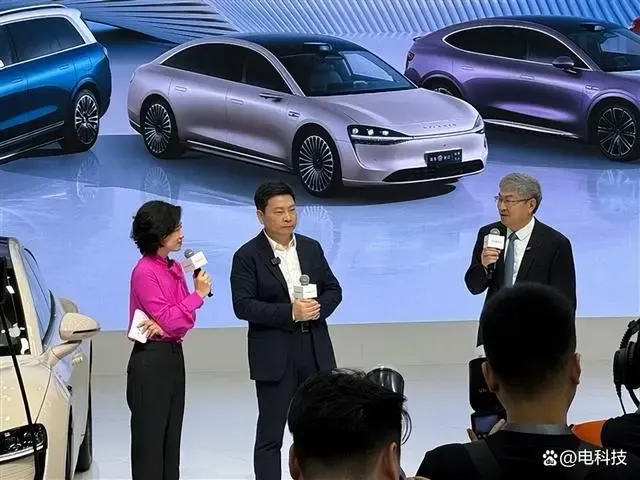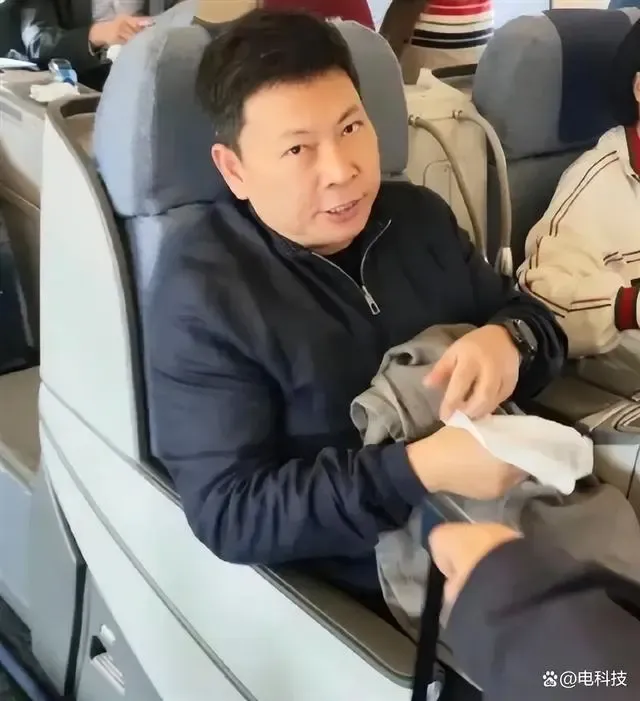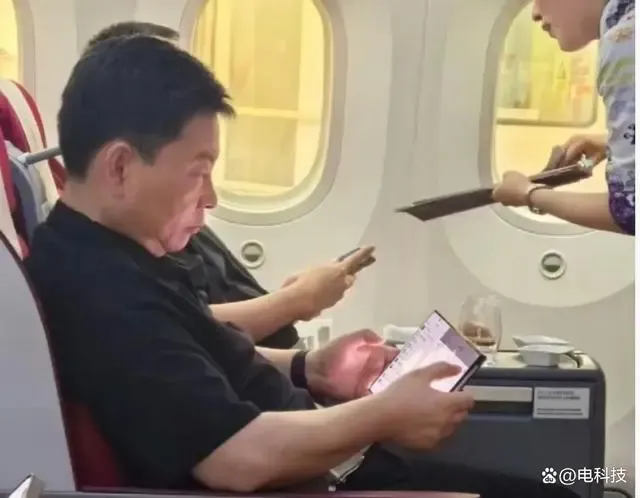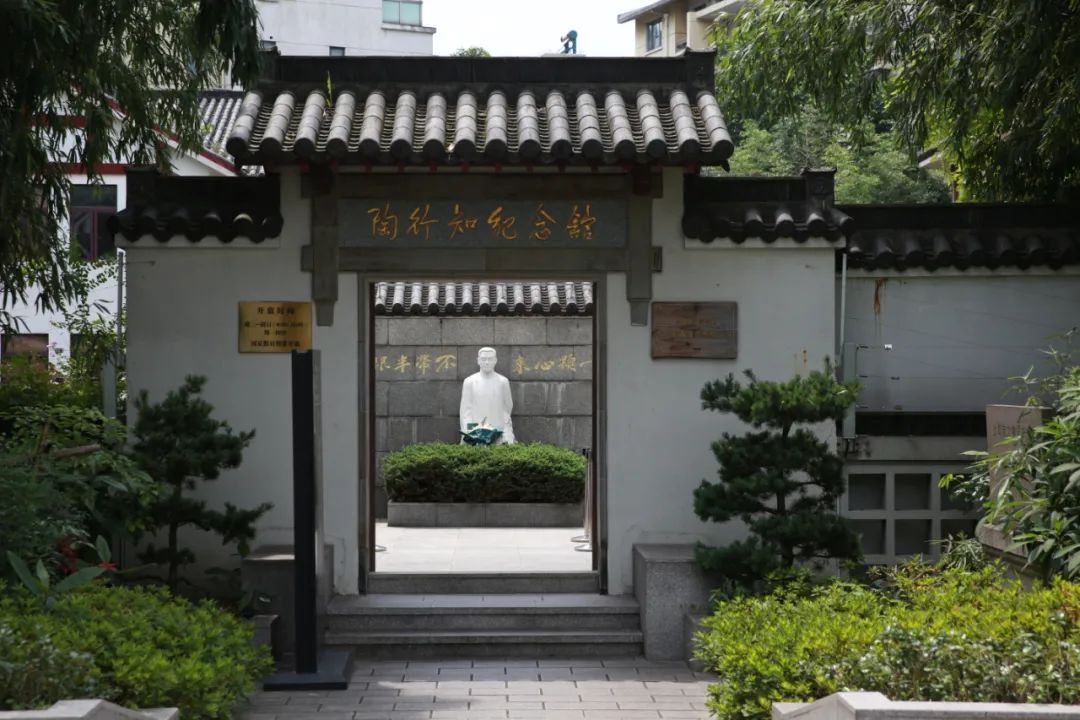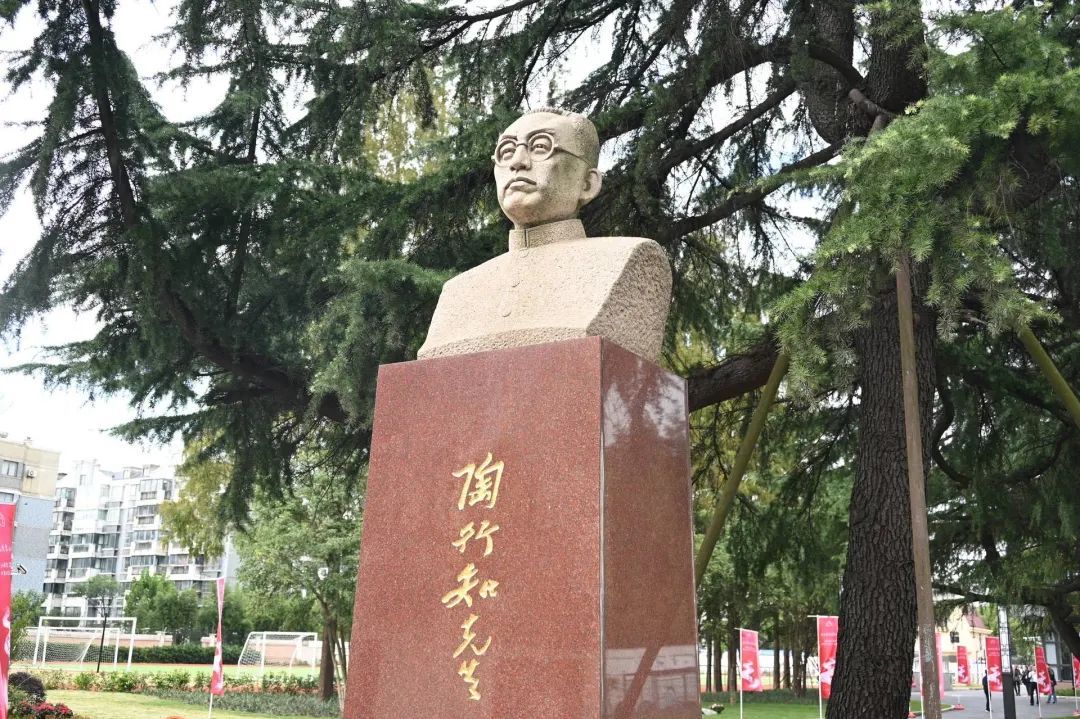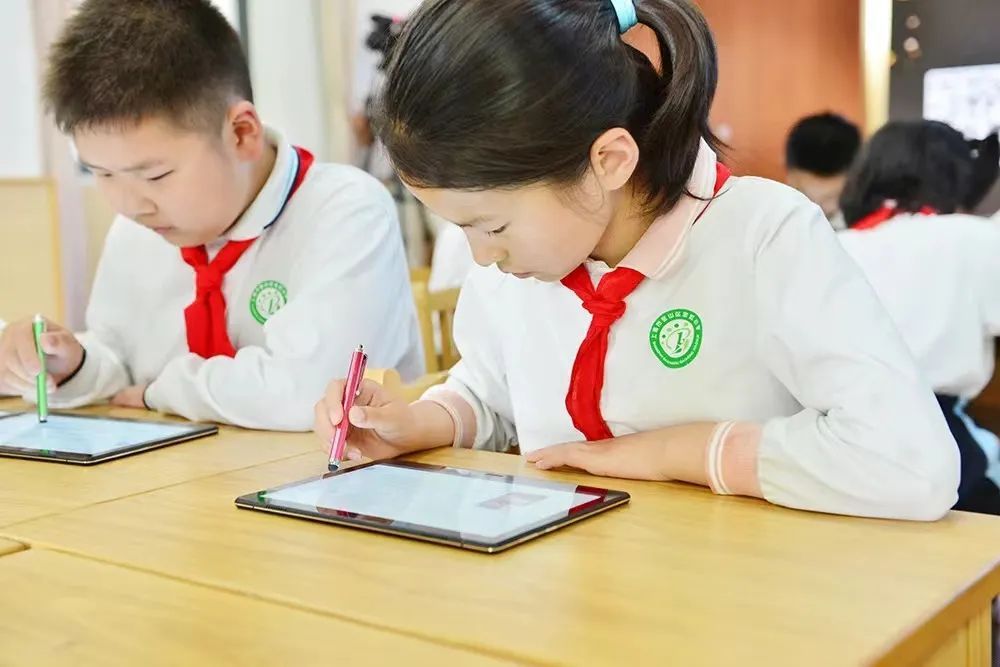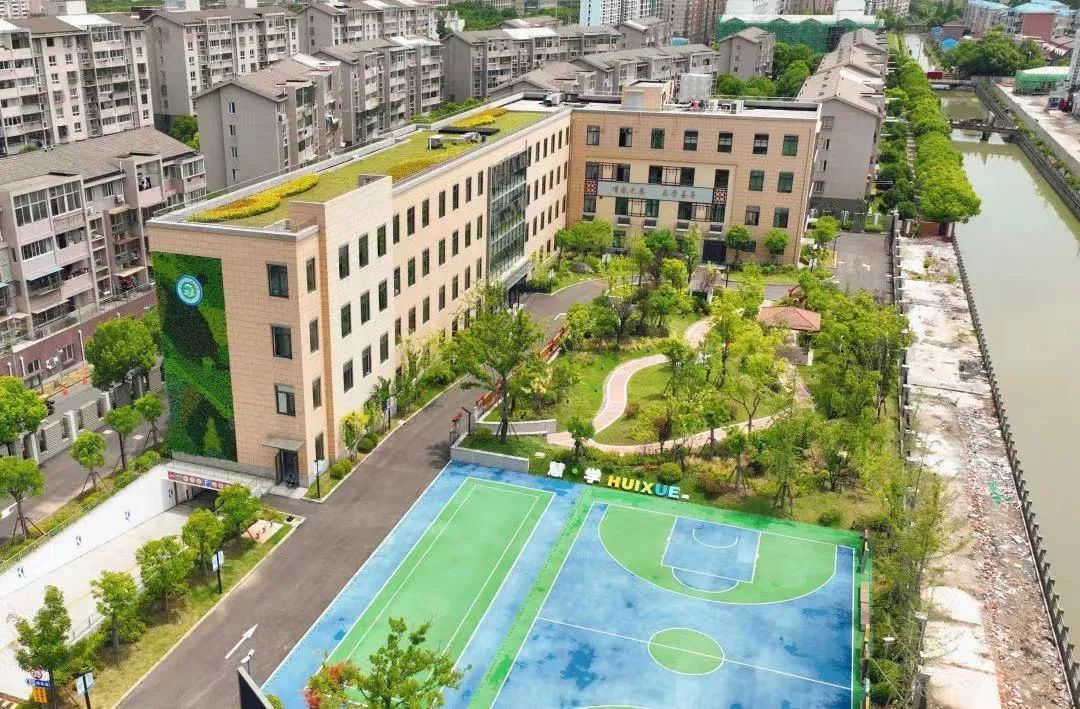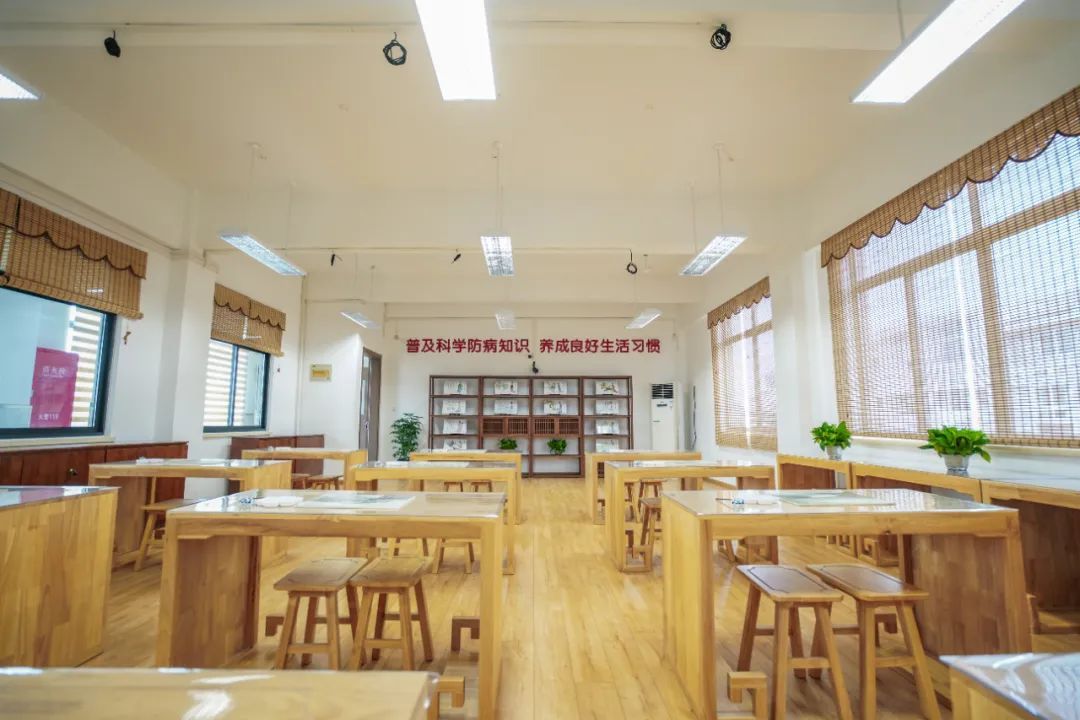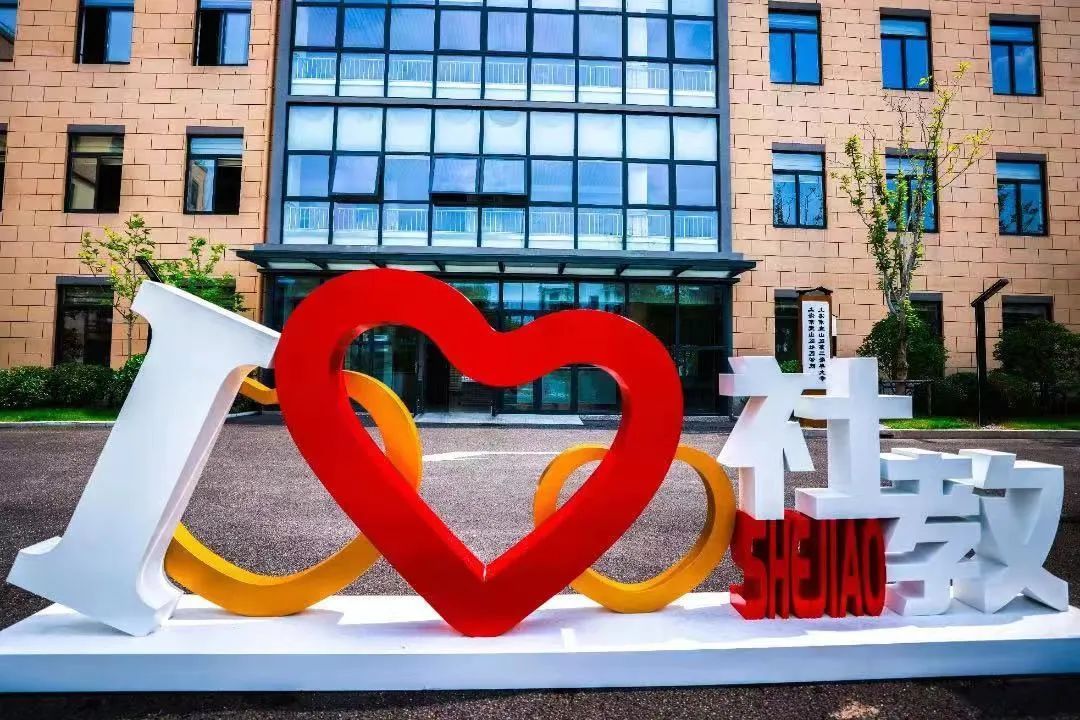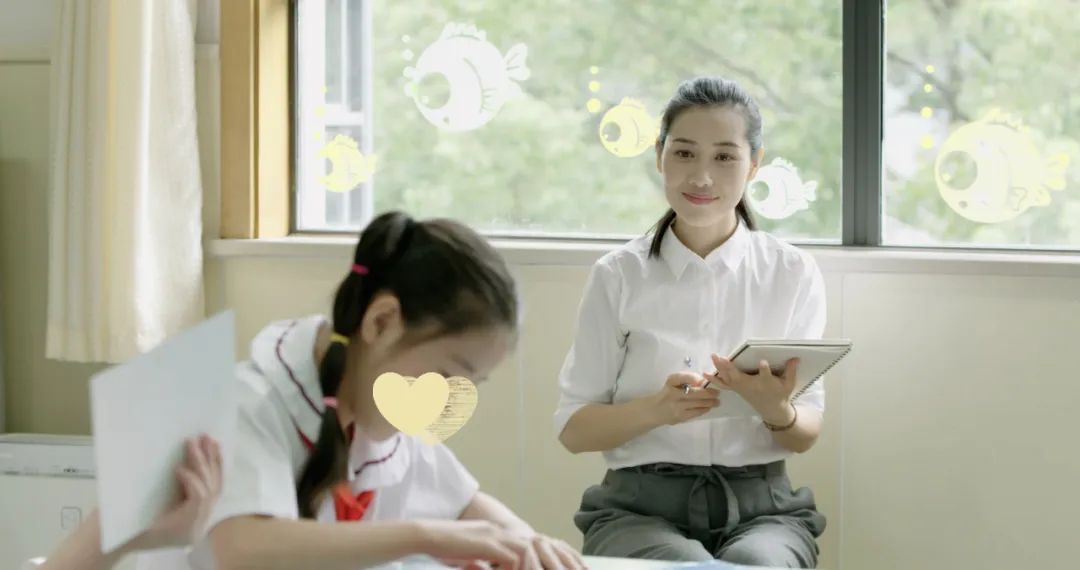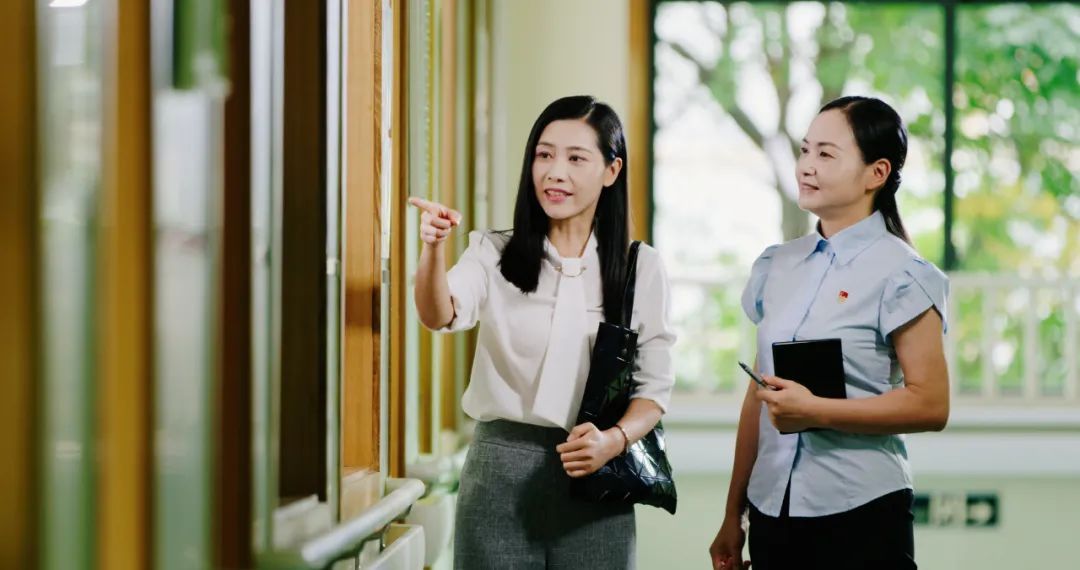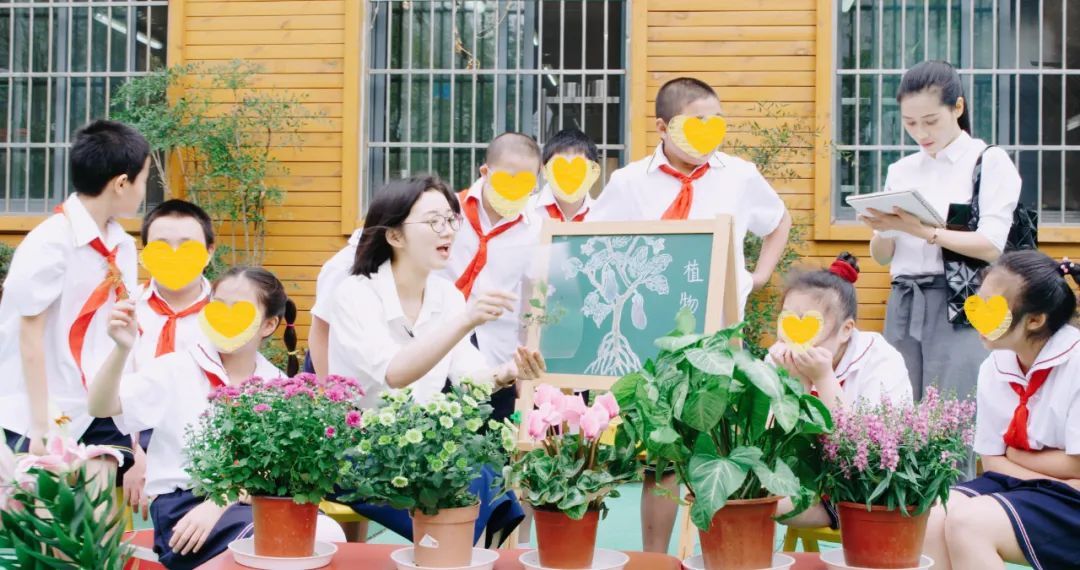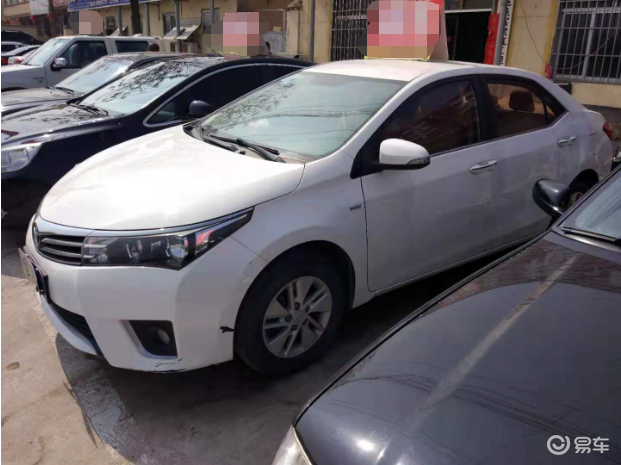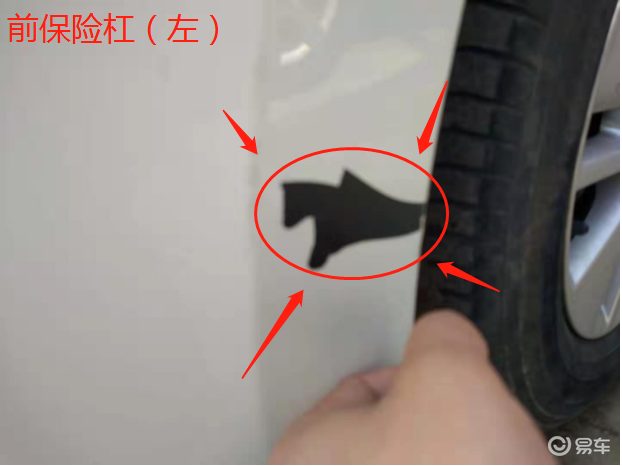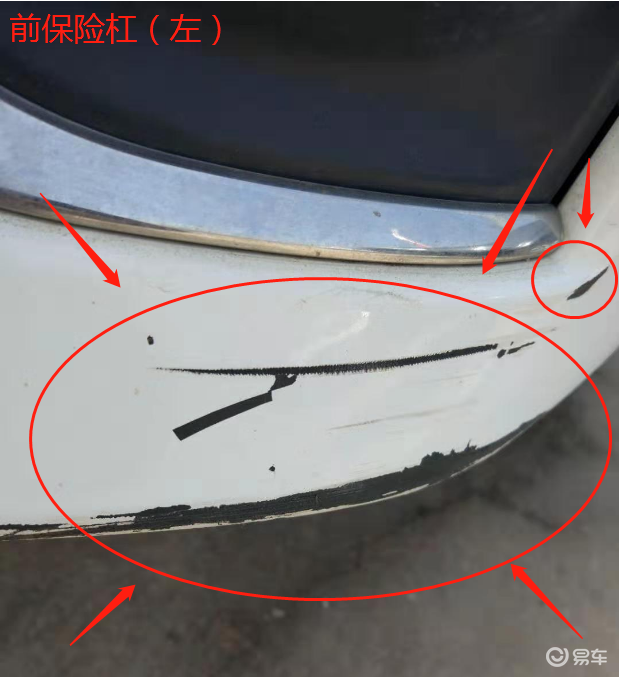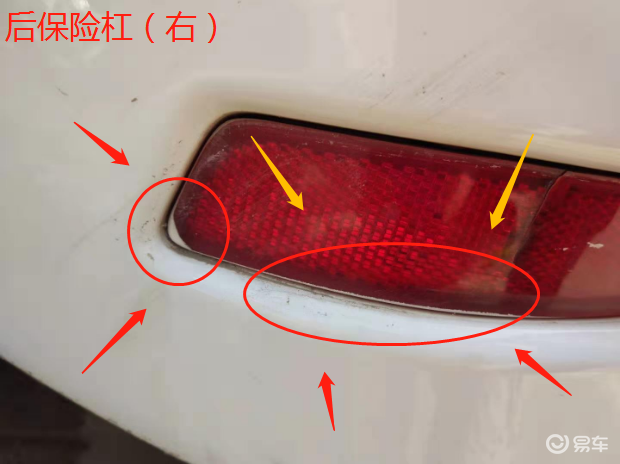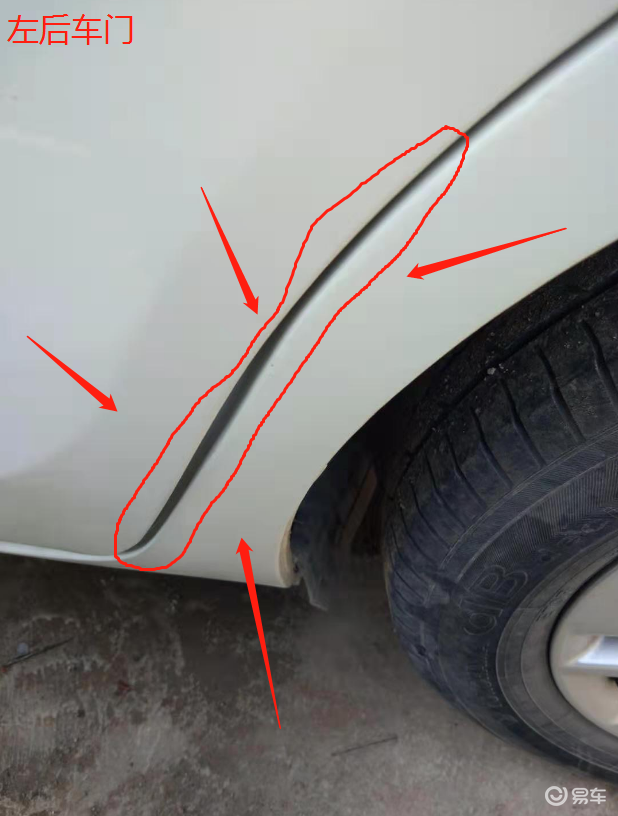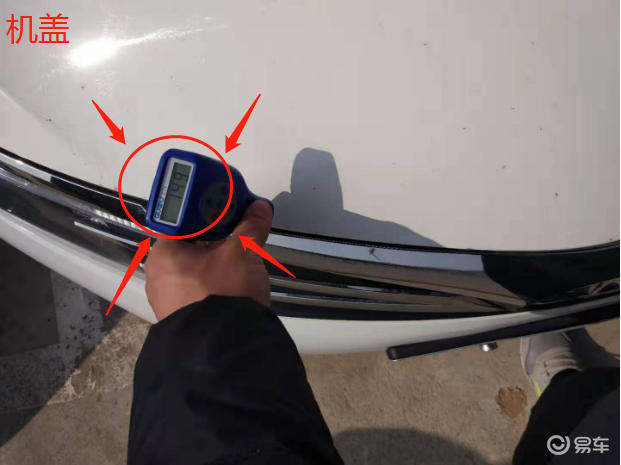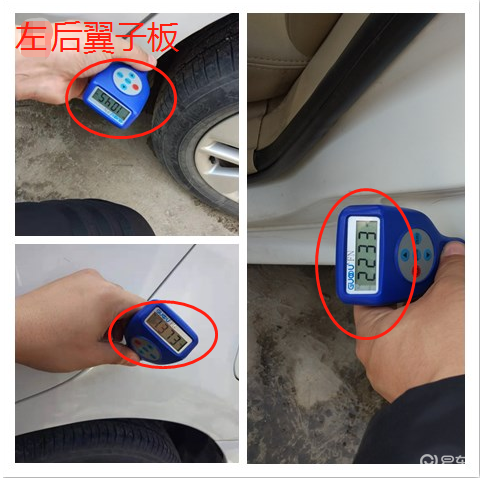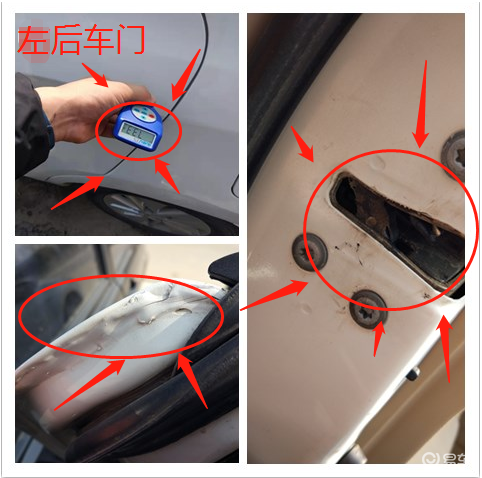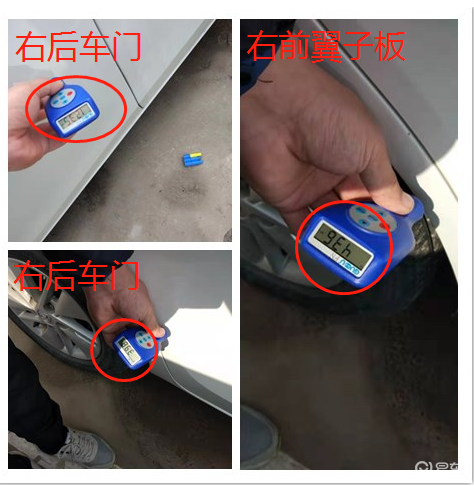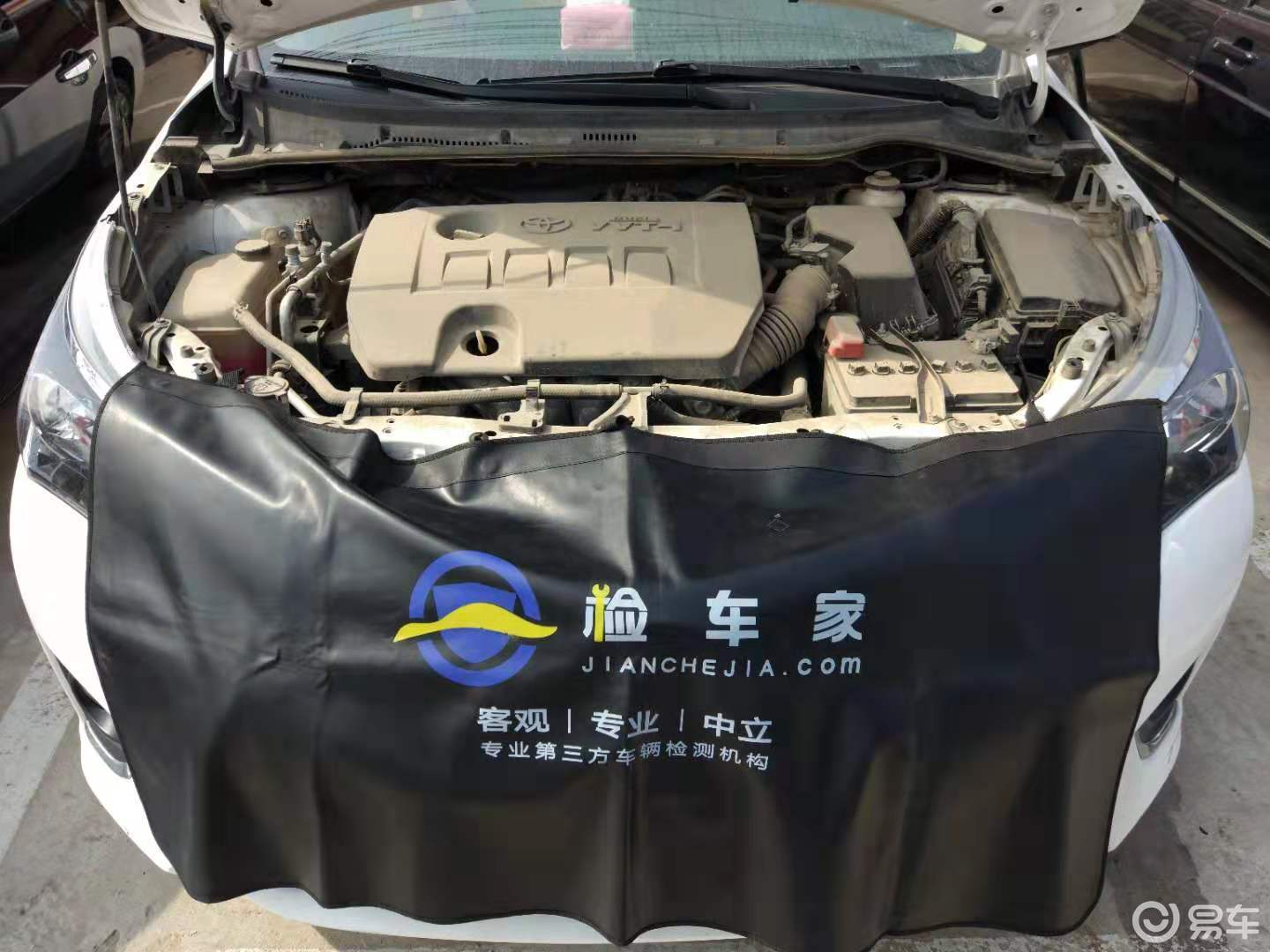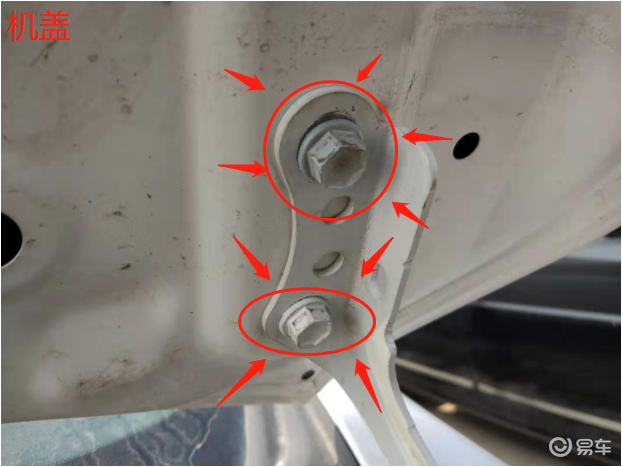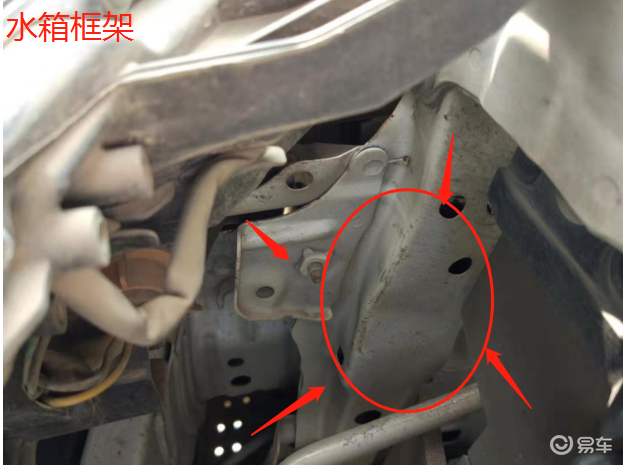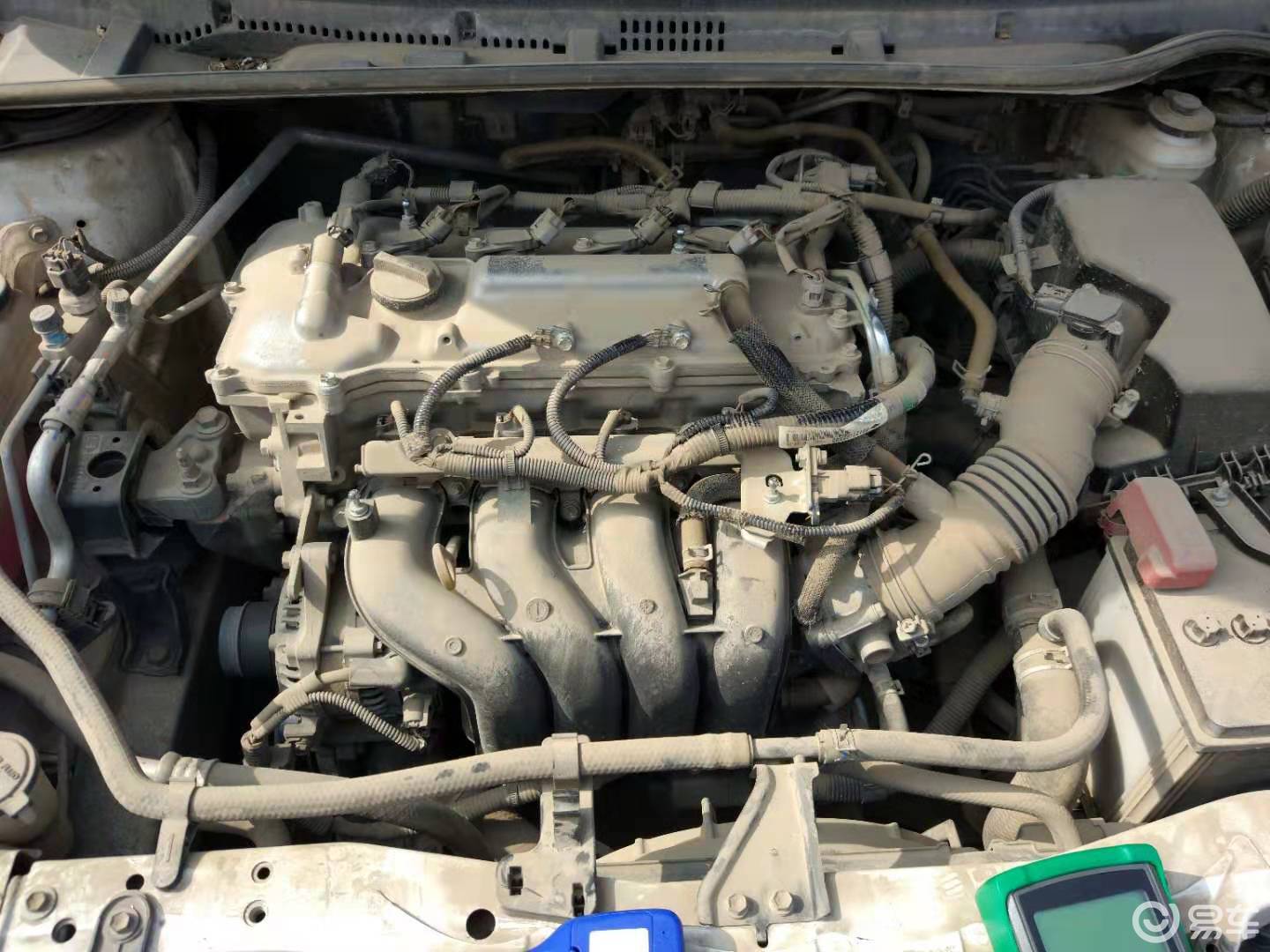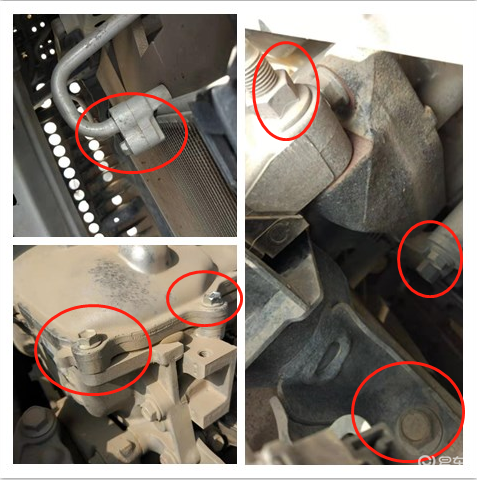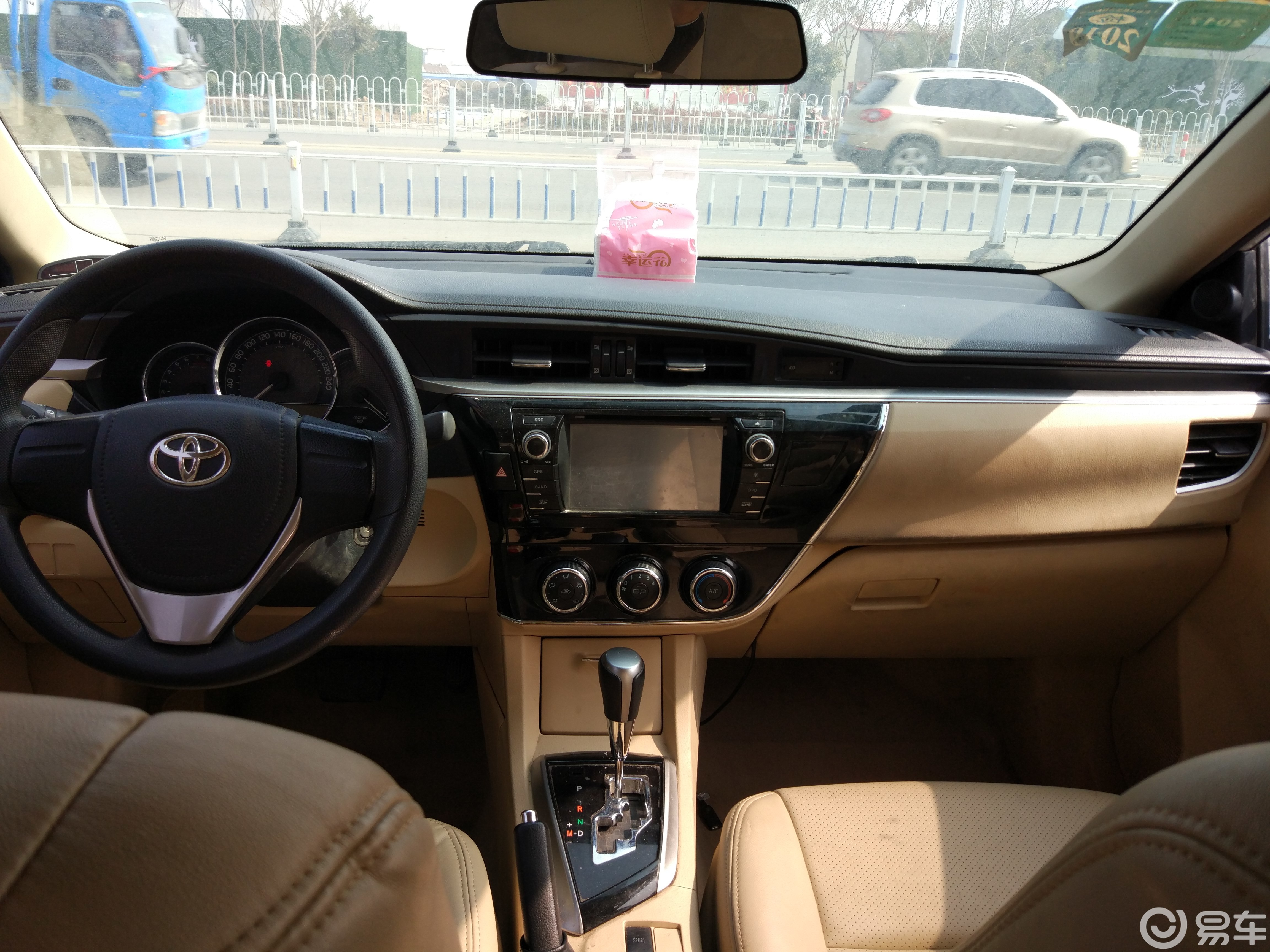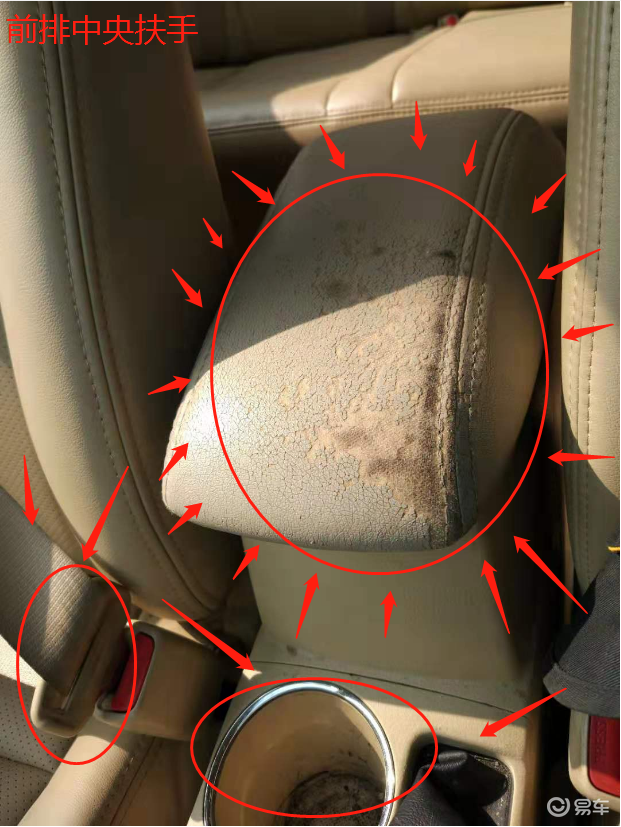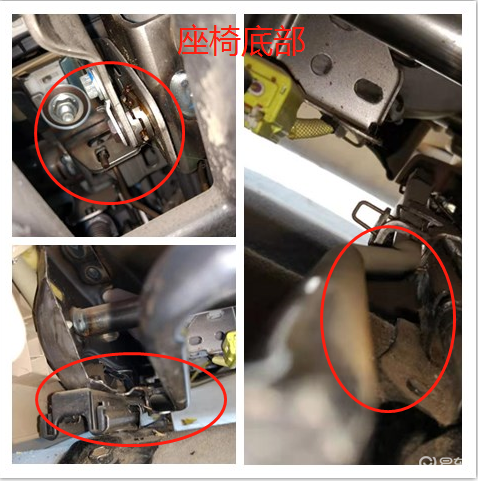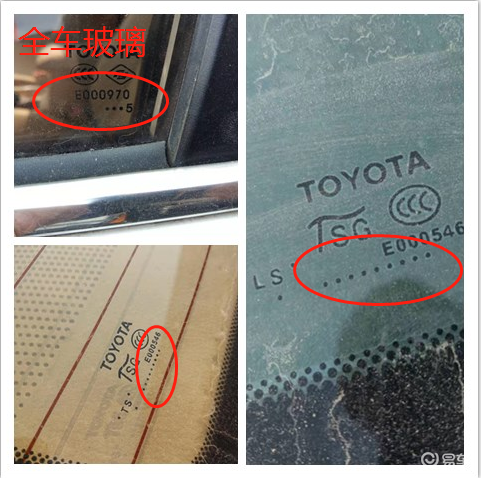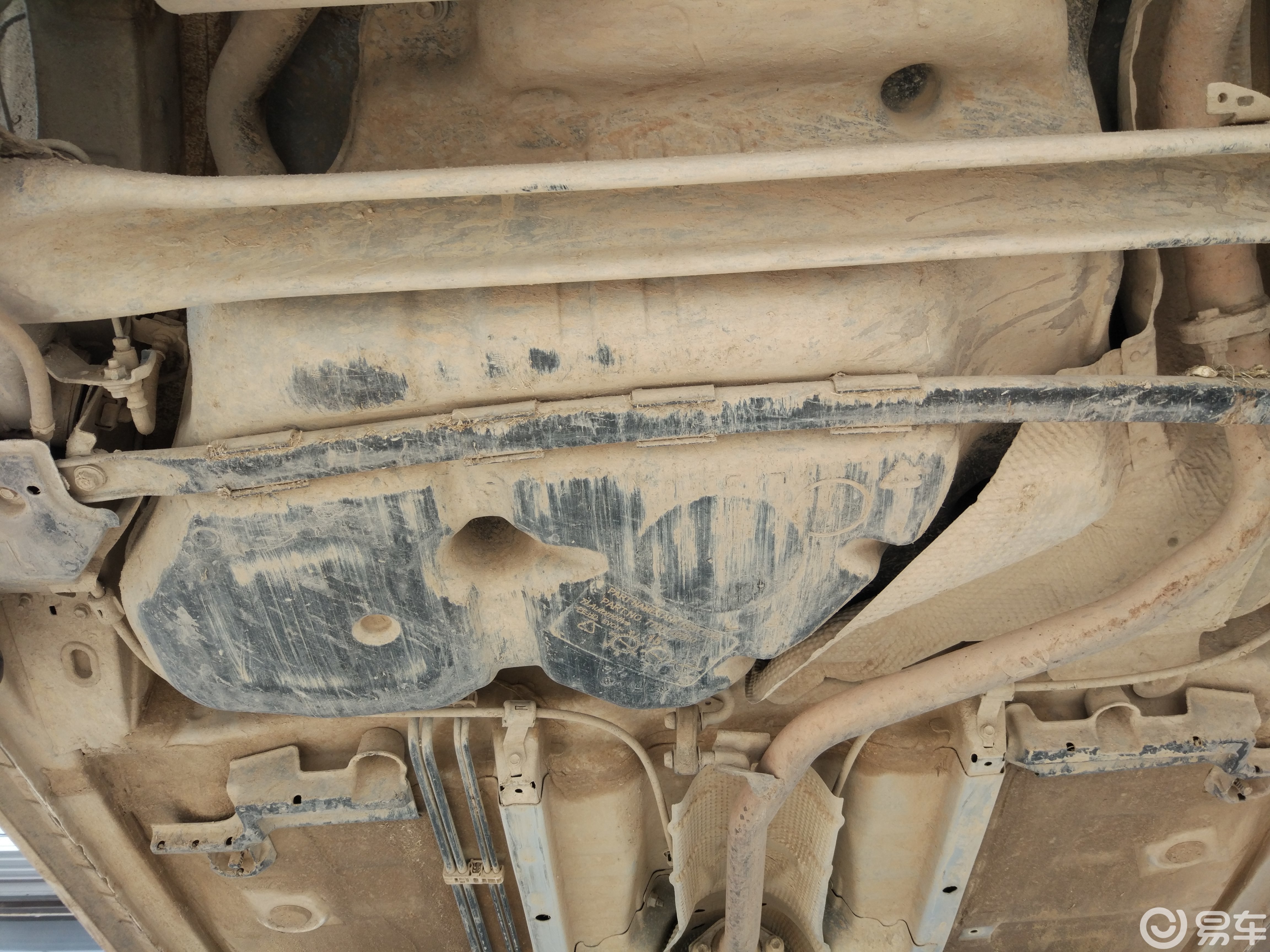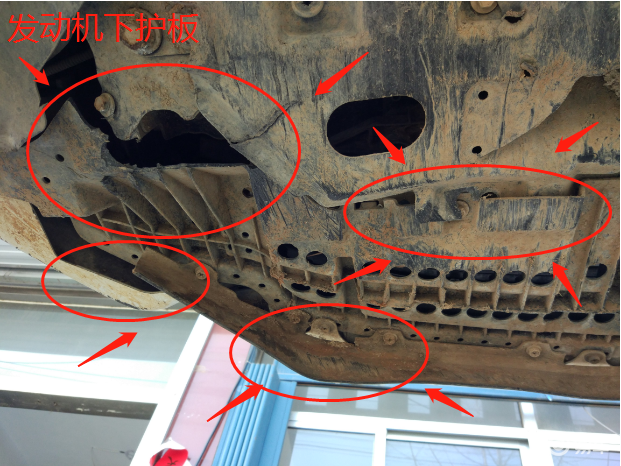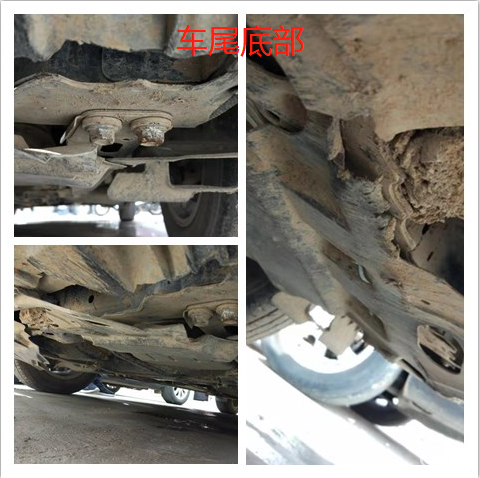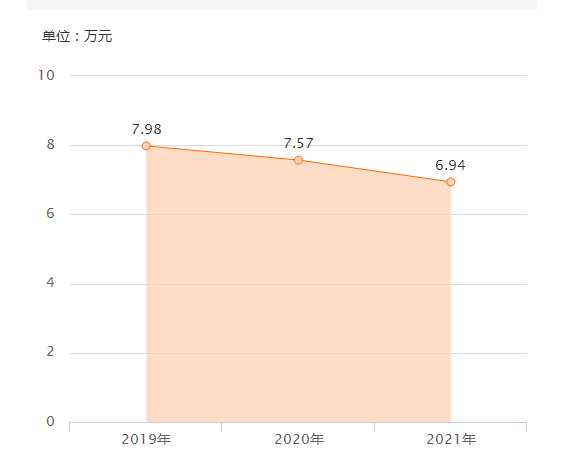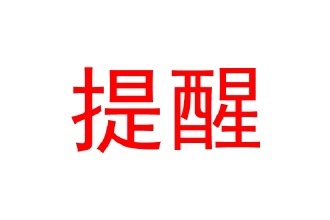The operating comments of Zhuojin’s 2023 annual board of directors are as follows:
I. Discussion and analysis of business conditions
2023 is the first year to fully implement the spirit of the 20th National Congress of the Communist Party of China, and it is also the year when the social and economic order enters a normal recovery. Under the leadership of the board of directors and the management, all employees of the company are United as one. On the one hand, they actively respond to the business environment of VUCA under the hundred-year change and solidly promote various work plans; On the other hand, we continue to adhere to the development concept of "technology drives industry" and adhere to the development strategy of "two-wheel drive". With the influence of listed companies, we will seize market opportunities, promote technology research and development, and innovate and upgrade products and services. While maintaining the competitiveness in the fields of environmental restoration and industrial pollution control, we will continue to explore new fields and expand new development space.
In 2023, faced with the extremely complicated and changeable macro-situation, the incremental market demand of environmental protection industry slowed down obviously, and the continuous growth of the scale of projects under construction showed a weak trend. At the same time, the increase of market participants has made the competition pattern of environmental protection industry more and more fierce. Under the combined effect of the above multiple pressures, the environmental protection industry as a whole is under great pressure, which has a great impact on the overall profitability of the company during the reporting period. During the reporting period, the company achieved a total operating income of 347 million yuan, up 41.09% year-on-year, mainly in 2023. The company’s operating order was fully restored, the project implementation of orders in hand and the marketing of major businesses returned to normal, the overall operating situation improved, and the scale of operating income was obviously restored. During the reporting period, the company’s total profit was-130 million yuan, mainly due to the influence of the economic environment and the overall competition trend of the industry, the shortage of government funds, the limited environmental protection budget arrangement and the decline of the overall gross profit margin of the industry. At the same time, the company’s main customers are the government, local investment platforms, state-owned enterprises and listed companies, etc. The overall funds of customers are tight, and the payment progress is delayed, which leads to the slowdown of the company’s payment. The credit impairment and contract asset impairment that the company needs to accrue have a significant impact on the overall net profit.
During the reporting period, the company actively implemented various business plans, continued to adhere to technological innovation as its core competitiveness, market demand as its development direction, safety production as its work basis, and expanded its business fields around the upstream and downstream of the industrial chain to enhance its comprehensive competitiveness. During the reporting period, the total amount of new contracts signed by the company was about 385 million yuan, and sufficient orders in hand were a strong guarantee for the company’s performance to pick up in the later period. While consolidating the market position of the three main lines of environmental restoration, industrial pollution and municipal administration, the company has continuously invested in the field of smart environmental protection and resource utilization, and has made remarkable achievements in smart soil management, smart water control and solid waste resource utilization, which has provided more guarantees for the company’s subsequent business growth. In 2023, the company earnestly implemented the target responsibility of quality and safety production, promoted the implementation of various measures for project quality and safety production, and ensured the effective control of project quality and safety production accidents and the smooth realization of quality and safety objectives. The goals of zero death, zero serious injury and zero pollution were maintained, and the quality management and safety management of the whole year were successfully realized.
In 2023, the company continued to increase investment in technology research and development, and the annual R&D expenditure was 29,068,100 yuan. The company has always paid attention to the investment in technology and R&D, and strengthened the establishment and process control of technology R&D projects to ensure the company’s competitive advantage in technology R&D.. During the reporting period, the company obtained 11 newly authorized patents, including 6 invention patents, 5 utility model patents and 4 software copyrights. The invention patent involves the company’s water pollution control and solid waste disposal business, soil remediation business and waste gas treatment business, which breaks the pain points and difficulties of the current treatment scheme in the industry and provides new processes and schemes with high stability, high efficiency and high resource utilization rate. It is the embodiment and extension of the company’s important core technology, which is conducive to the company to give full play to the advantages of independent intellectual property rights and promote technological innovation, thus enhancing the company’s core competitiveness. In addition, by the end of 2023, the company had 11 ongoing research projects and added 2 provincial-level R&D projects.
The company’s R&D investment in high-tech and the application of achievements have not only enhanced the company’s comprehensive competitiveness, but also been highly recognized by the government and society. During the reporting period, the company won the honorary title of excellent enterprise (engineering construction category) in 2023 for the investigation and evaluation of polluted land in Zhejiang Province and the level evaluation of management and restoration practitioners. The honor aims to promote the healthy development of soil pollution control and remediation industry in Zhejiang Province and provide professional authoritative guidance for soil pollution control and remediation in the province. The company has a strict quality management system in engineering construction, which ensures the organization guarantee, system guarantee and work guarantee for the implementation of each project. In recent years, the company has carried out a number of soil remediation projects with large volume of contaminated soil and complex pollutants, with rich experience. The remediation results have been highly recognized by the owner, evaluation experts and ecological and environmental departments, and the treatment and remediation of contaminated plots have provided strong support for project implementation. In the engineering design qualification, the new environmental engineering (air pollution prevention and control project) special design qualification B.
During the reporting period, the Company continued to improve its internal governance structure and improve its corporate governance level. In strict accordance with regulatory requirements and laws and regulations, it further standardized the operation mechanism and scientific decision-making system of the Three Meetings, and also continued to optimize its internal information management, internal control system implementation and organizational structure adjustment, thus continuously improving its internal governance level and providing necessary guarantee for its long-term stable development.
II. Description of the company’s main business, business model, industry and R&D during the reporting period.
(a) the main business, main products or services.
During the reporting period, the company’s main business covers "comprehensive environmental protection services" and "sales and services of environmental protection products", and its industries belong to ecological protection and environmental management. Relying on its own core technology, the company provides customers with comprehensive environmental protection management solutions. By designing customized solutions and mainly by means of engineering implementation, the polluted media (including soil, groundwater and surface water) and environmental pollution sources (wastewater, waste gas and solid waste) are repaired, treated and disposed. After years of development, it has realized the provision of full-process solutions including project technical scheme design, project implementation and risk management and control, continuous management consulting and operation and maintenance services. During the reporting period, the company mainly includes three formats: environmental restoration, treatment of industrial pollution sources and sales and service of environmental protection products.
1. Environmental restoration
Environmental restoration refers to the effective application of technical means and engineering measures to prevent the occurrence of secondary pollution or secondary damage, so that the normal ecological structure and function can be maintained or improved, and the environmental quality and ecological restoration of polluted soil, groundwater, sites and water bodies can be realized.
The company’s environmental remediation business mainly includes soil and groundwater remediation and water remediation. The company mainly focuses on soil remediation projects in the field of environmental remediation, and is one of the leading enterprises in this field in China at present.
(1) Soil and groundwater remediation: The soil and groundwater remediation projects carried out by the company are mainly industrial site remediation. In accordance with the requirements of environmental policies, industry standards and other laws and regulations, pollutants in plots and groundwater will be removed, reduced, fixed or the risk will be controlled at an acceptable level by means of project implementation, environmental technology and long-term supervision. The company has mastered a number of core technologies, covering various types of projects in the field of soil and groundwater remediation, involving heavy metals such as copper, zinc, lead, chromium, nickel, arsenic and antimony, as well as organic pollutants such as volatile organic compounds (VOCs), semi-volatile organic compounds (SVOCs) and petroleum hydrocarbons (TPH). While achieving the goal of remediation of soil and groundwater pollutants, reduce "odor disturbing people" and achieve the goal of efficient and green remediation.
The company is one of the earliest private enterprises engaged in soil remediation business in China. Relying on the highly educated and multi-professional remediation team, it can independently, efficiently and completely carry out site investigation and risk assessment, technical consultation and scheme design, project implementation and project management, risk control and follow-up assessment, and provide one-stop comprehensive services for soil and groundwater remediation. Since its establishment, the company has undertaken a number of high-quality and representative benchmark projects with rich experience. In 2023, the contaminated soil remediation project of the old factory area in Yaohai District (and (the first phase of pollution control) of Anhui Red Sifang Co., Ltd. was successfully accepted. This plot is a local large-scale industrial relic of pesticide plant, and the soil pollution types are heavy metals, volatile organic compounds and semi-volatile organic compounds. The polluted soil is massive and complicated. The company adopts the combined remediation technology of "heterotopic thermal desorption+heterotopic chemical oxidation+normal temperature desorption+cement kiln co-disposal +GCL composite vertical barrier technology", and at the same time, it does a good job in the prevention and control of secondary pollution caused by odor diffusion in the implementation process, and practices the "1+"environmental stewardship unit+"1" third-party inspection unit+"4" construction unit, engineering supervision unit, environmental supervision unit and effect evaluation unit. The project governance effect has been unanimously recognized by the owner, evaluation experts and government departments.It won a good reputation and laid a solid foundation for the company to open up the market outside Zhejiang Province.
In 2018, the company undertook and implemented the "Restoration Project of Retired Plot in Zhejiang New Century Metal Material Spot Market", which is one of the largest single-scale industrial contaminated site restoration projects in Zhejiang Province. This plot belongs to a typical large-scale complex contaminated site, and the company solved a series of key typical problems of this kind of site during the construction process. In view of the strong spatial heterogeneity of soil pollution, pre-construction review is adopted to realize fine pollution characterization and avoid invalid work and waste of resources; According to the characteristics of multi-factor compound pollution, single or combined remediation technologies such as thermal desorption, elution and solidification stabilization are used to achieve the goal of land remediation; In view of the high economic cost of repairing large-scale complex polluted sites, a number of measures are comprehensively utilized to reduce energy and resource consumption, giving consideration to economic and ecological benefits; In view of the dense sensitive targets around the plot, many measures were taken simultaneously, and the source of public opinion was well managed through strict secondary pollution control and public participation. In addition, the whole construction process of this project is equipped with intelligent management system, and the intelligent and refined management of land parcel management is realized by digital means. The management and treatment experience of large-scale complex polluted sites summarized from the practice and concise training in the treatment of this plot has been applied in many similar polluted plots of the company and achieved good application results, such as plot 0308 of Hanggang, plot of Xin ‘an Chemical Industry and Fubon Emergency Treatment Project. The management and management experience in the process of this plot governance also provides reference for other similar polluted plots governance, and promotes the construction of the pioneer area of soil control in the Yangtze River Delta region.
(2) Water body restoration: In view of the problems of water environmental pollution and water ecosystem degradation, the water body restoration project carried out by the company adopts the method of combining ecological measures with engineering measures to control water body pollution, remove eutrophication, rebuild water ecosystem and restore its function. The company’s core technology, "Intelligent River Living Water System", realizes intelligent water distribution and intelligent water quality regulation through intelligent water environment management technology covering data collection, hydrological and water quality coupling model and big data analysis.
Based on the core technologies such as monitoring and early warning, pollution tracing, hydrodynamic improvement and water environment capacity expansion, three-dimensional habitat reconstruction of water environment, long-term intelligent management and maintenance, the company’s water body restoration business will restore and repair the degraded or damaged water ecosystem, basically reaching or exceeding the original level, and maintain its long-term stability. Up to now, the company has undertaken nearly 30 projects related to water environment, with stable performance and income and rich project experience. In the project of "Water Ecological Restoration Experimental Section Project of Wenling Jiulonghu National Wetland Park" undertaken by the company, "submerged ecological construction technology" was adopted to construct an ecosystem composed of submerged plants, plankton, aquatic animals and microorganisms. At the same time, in order to ensure the ecosystem to continuously play the role of water purification and regulation, solar fountains were used to increase dissolved oxygen and continuously reduce the concentration of sediment and water pollutants, thus restoring the water ecosystem, making the coverage rate of underwater forests in the restored waters reach more than 60%, and aquatic plants grow well, forming a beautiful underwater landscape.
2, industrial pollution control
Industrial pollution source control business refers to the design and construction of emission control devices at the end of industrial production by combining physical, chemical and biological methods to reduce the pollution source content in industrial wastewater, waste gas and solid waste to meet the requirements of emission standards.
The company’s industrial pollution source control business mainly focuses on high-complex pollution industries such as medicine and chemical industry, as well as emerging industries with rapid capacity expansion such as photovoltaic and lithium batteries. The discharge of pollutants in the above fields has the characteristics of high complexity of pollution components, large proportion of highly toxic and refractory substances, high salt content, large fluctuation of water quality and poor biochemistry. According to the types of pollution sources, it can be divided into three directions: water pollution control, waste gas control and solid waste disposal.
(1) Water pollution control: The company’s industrial water pollution control business focuses on medicine, chemical industry and other sub-sectors, with extremely high technical requirements. In view of the refractory industrial wastewater with high salinity, high nitrogen and high organic content, the company provides customers with comprehensive services in the whole process of resource utilization, quality pretreatment, new biochemical treatment and reuse of typical wastewater through a number of independent technologies such as physical, chemical and biological treatment, so as to realize water pollution control, near zero discharge and resource utilization.
The company has accumulated a lot of technical experience and project experience in the treatment of pharmaceutical and chemical wastewater. In view of different subdivided wastewater fields, such as fermented pharmaceutical wastewater, traditional Chinese medicine wastewater, typical fine chemical wastewater, typical large chemical wastewater, surfactant wastewater, and typical high-nitrogen and high-toxic wastewater, different technological processes and technologies are adopted to provide practical and effective solutions for the owners, and further promote the green development of the pharmaceutical and chemical industry.
() Waste water EPC general contracting project is the largest water pollution control project undertaken by the company in recent years. Aiming at the difficult treatment of pharmaceutical and chemical wastewater, the company has developed the treatment technology of high salt, high nitrogen and high organic industrial wastewater. Its core is high-efficiency microbial strains. Through the screening and amplification of special-effect strains, the company built a special microbial library for high-salt and high-nitrogen wastewater, and screened out the best proportion formula of special microbial agents for different types of industrial wastewater. Comprehensive application and independent development of high-efficiency salt-tolerant bacteria and high-efficiency nitrogen-removing bacteria. Combined with customized optimization of reactors and other equipment, determination of key parameters and step domestication and debugging, the rapid start-up, biochemical shock resistance and long-term stable operation of organic wastewater treatment system with high salinity, high nitrogen and high concentration are realized.
The water purification center project of Naaisi Group undertaken by the company belongs to the daily chemical industry wastewater project, which will produce industrial wastewater with high complexity and difficulty in treatment, including oil hydrolysis wastewater, glycerin wastewater, soap vacuum drying wastewater and liquid washing wastewater. The company adopts electrolytic catalytic oxidation+biochemical+fiber turntable treatment process, and the effluent quality reaches the first-class A standard in the Discharge Standard of Pollutants for Urban Sewage Treatment Plants (GB18918-2002).
(2) Waste gas treatment: The company’s waste gas treatment business mainly focuses on emission reduction, treatment and comprehensive prevention of VOCs (volatile organic compounds) involved in the production process of pharmaceutical and chemical industries, photovoltaic raw materials and municipal fields. The company mainly uses core technologies such as "washing+adsorption-desorption-solvent recovery" to adsorb and separate organic waste gas and recycle the separated organic matter. The company has been deeply involved in the field of waste gas treatment for many years, and has accumulated leading design ability, professional management team and rich project experience, which has established the company’s leading position in the field of waste gas treatment in China. The company applies advanced treatment technology and comprehensive solutions to the waste gas treatment project to achieve the unity of high efficiency and economy.
The toluene DMF organic waste gas solvent recovery project of Zhejiang Kunfu Zhichuang Technology Co., Ltd. was successfully debugged in 2023 and put into operation smoothly. This project is the organic waste gas produced by coating oven in textile finishing industry, with high VOCs concentration and large air volume. FID is required to monitor the standard discharge online and recover the organic solvent for reuse in production, which has high requirements on the chromaticity, clarity and moisture content of the recovered solvent, and belongs to a difficult organic waste gas solvent recovery project. The company adopted the combined treatment and recovery technology of "adsorption and concentration of rotary wheel+dehydration of waste gas+cryogenic recovery", which realized the continuous discharge of waste gas up to the standard for 24 hours, and the recovered solvent was colorless, clear and transparent, with a water content of less than 500 mg/L. At the same time, the energy consumption of the system is controlled at a low level, and the economic value is high. The comprehensive recovery cost of the solvent is 1,500-2,500 yuan/ton, resulting in a value of 4,000-8,000 yuan/ton (estimated according to the market price in 2023). The treatment effect, solvent recovery quality and energy consumption of the project have been highly recognized by the owners, and at the same time, it is highly in line with the national environmental protection strategic direction of low carbon emission reduction, which provides better technical support for the treatment and recovery of coated organic VOCs waste gas, and can be widely used in chemical industry, medicine and other VOCs waste gas working conditions with recycling value.
Nantong Runqi Environmental Protection Service Co., Ltd. successfully accepted the waste gas treatment system renovation project in 2023. This project mainly deals with the comprehensive treatment of malodorous gases produced in the pretreatment process (storage, breakage, feeding and other processes) of hazardous waste before incineration. Among them, the waste gas from crushing and storage pits mainly includes volatile organic compounds, particulate matter, sulfur dioxide, hydrogen sulfide and other pollutants, with complex composition and great concentration fluctuation, which is difficult to treat. Based on the characteristics of waste gas emission from crushing and storage pits, the company adopts the combined process of "pretreatment+activated carbon adsorption and desorption+condensation", which not only effectively controls the peak value of waste gas emission, but also recycles most volatile organic compounds, turning "waste gas" into "fuel" to help the hazardous waste incineration industry achieve the goal of pollution reduction and carbon reduction. The popularization and application of this technology has laid a good foundation for the company to build its core competitiveness with independent intellectual property rights in the field of air pollution prevention and control, especially in the field of waste gas resource utilization.
(3) Solid waste disposal: During the reporting period, the company’s business in the field of solid waste disposal mainly focused on sludge treatment associated with sewage treatment. Through the company’s unique sludge leaching deep dehydration technology, the sludge sediment produced in sewage treatment is treated and disposed in a stable, harmless and resource-based manner, so as to realize deep dehydration of sludge and achieve the state of incineration disposal at the back end.
Sludge microbial strains were domesticated and modified by bioleaching technology, and sludge Gao Qian deep dehydration and sludge reduction were realized without adding chemical agents. The company has completely mastered the domestication method of high-efficiency bioleaching strains and the matching formula of special microbial nutrients, and is one of the few companies in China that have mastered the process route and realized industrialization at present.
3. Sales and service of environmental protection products
The company’s environmental protection product sales and service business mainly provides equipment sales and related installation, debugging, maintenance, maintenance and transformation services to municipal departments, water companies and engineering contractors.
(1) Sales of environmental protection equipment: The company mainly provides municipal customers with water pumps, mixers, impellers, fans, ozone systems and other equipment.
(2) Technical services: The company mainly provides services such as installation, debugging, maintenance, maintenance and transformation of environmental protection equipment.
(II) Main business models
During the reporting period, the company’s main business was comprehensive environmental protection management services and sales and services of environmental protection products, with comprehensive environmental protection management services as the main source of income. In the comprehensive environmental protection service business, the company mainly adopts EPC mode, and at the same time adopts PC, technical consultation and custody operation mode to provide services to customers in order to obtain corresponding operating income and profits.
(1)EPC mode and engineering procurement construction means that the company signs a general contracting contract with the customer, and undertakes major construction work including planning and design, procurement and integration of equipment and materials, project implementation and management according to the customer’s target requirements. The company is fully responsible for the quality, safety and construction period of the project, and delivers the whole project to customers after the construction is completed, the use functions are met and the use conditions are met.
(2) Compared with EPC mode, PC mode and ProcurementConstruction mode are different in that the planning and design of the project is not completed by the company under PC mode. According to the overall project solution provided by customers or design units entrusted by customers, the company comprehensively considers various factors and determines the project implementation plan after conducting feasibility tests, and undertakes major construction work such as procurement and integration of equipment and materials, project implementation and management, and is responsible for the quality, safety and construction period of the project, and delivers the whole project to the owner after completion.
(3) The technical consultation mode refers to the services provided by the company to customers such as front-end investigation, risk assessment, design planning consultation and environmental emergency consultation. Provide customers with feasibility study and scheme design, and guide project implementation and redevelopment. For example, provide site investigation, risk assessment and restoration scheme design for soil and groundwater remediation projects; Provide experimental research, process diagnosis, technical scheme design and planning for water pollution control and waste gas treatment projects in the treatment business.
(4) Custody operation mode means that the customer will hand over the environmental protection project after the investment is completed to the company, and the company will be responsible for the operation and management of the facilities within the agreed time limit. According to the contents of the operation services provided, the company regularly collects service fees from the service objects. Managed operation mode helps the company to combine the core technology advantages with the normal operation of environmental protection projects, provide full-process services for customers’ overall needs, and enhance the company’s sustainable profitability. It is a service mode developed by the company on the basis of EPC.
(5) Product sales and services: In terms of product sales and services, the company sells environmental protection equipment and products through agents, and provides services such as installation and maintenance to obtain corresponding operating income and profits. Its main customers are local water groups and public utilities.
2. Marketing model
During the reporting period, the company’s business mainly reached cooperation through public bidding, invitation bidding and competitive negotiation, as follows:
(1) Open bidding
Public bidding means that customers invite all potential unspecified suppliers to participate in bidding by issuing a tender announcement. The way for customers to select the best supplier from all bidding suppliers through pre-determined standards.
(2) Invitation to bid
Invited bidding means that customers invite specific suppliers to participate in bidding by issuing tender announcements. The way for customers to select the best supplier from specific bidding suppliers through pre-determined standards.
(3) Competitive negotiation
Competitive negotiation refers to the way that the customer finally determines the supplier through negotiation, consultation or price comparison with multiple suppliers. In the specific business, the company has set up a professional and rich marketing team around its main business field and oriented to key regional markets, and obtained business information through customer visits, customer inspections, exhibition marketing, partner promotion, network platforms, etc., and further understood the specific needs of customers through technical exchanges. After comprehensive evaluation of business, technology and strategy, the target project is identified, the project sales leader is selected to design and communicate with technicians and customers, and the project quotation and competitive strategy are determined on the basis of project cost accounting.
3. Purchasing mode
The company pays attention to product quality and procurement process control, and has established a perfect procurement process and management system. The purchasing department of the company is responsible for the development, evaluation and maintenance of suppliers, as well as procurement bidding, procurement contract management and supervision and implementation. According to the procurement application list of project equipment, raw materials or subcontracting services submitted by the project manager, the procurement department conducts procurement through price comparison, sealed inquiry, simple bidding, invitation bidding, etc., and personnel from the implementation department and internal control department of the company participate in the procurement comparison and selection process, so as to ensure that the procurement work is carried out legally and effectively. After determining the intended supplier, it will sign a contract for purchase after internal audit and approval. In supplier management, the purchasing department adopts a dynamic management mode to suppliers, carries out daily performance evaluation and regular assessment, and establishes a list of qualified suppliers.
4. R&D mode
The company pays attention to scientific and technological research and development, strengthens scientific and technological innovation and transformation of scientific and technological achievements, and has formed a research and development system with "provincial enterprise research institute" as the main structure. The company’s research and development work focuses on the technical hotspots, pain points and development direction of the industry, especially for the application needs in the implementation of environmental protection projects. The R&D work focuses on industrial pollution control, environmental restoration, solid waste recycling and smart environmental protection, and a professional research institute is set up under the Enterprise Research Institute to solidly promote the R&D work of new technologies, new achievements and new applications in various advantageous business areas around the main business.
(3) the industry situation
1. The development stage, basic characteristics and main technical threshold of the industry.
(1) development stage
The driving force for the development of environmental protection industry mainly comes from two aspects: first, the need to improve and control the environmental pollution problems left over from the past economic development; Second, in order to prevent the possible social crisis in the future, the environmental protection industry needs to be deeply integrated into all aspects of existing industrial production and human social life and provide solutions.
Under the guidance of the goal of "double carbon", the social significance and industrial responsibility of environmental protection industry have become increasingly prominent. Through policy guidance and macro control, the national government has provided a broad development prospect for the environmental protection industry. In the Party’s Report to the 20th CPC National Congress, the concept of "modernization of harmonious coexistence between man and nature" was incorporated into the inherent requirement of "Chinese modernization", which once again emphasized the strategic task of ecological civilization construction in China in the new era-promoting green development and promoting harmonious coexistence between man and nature, and clearly put forward four major work objectives: accelerating the green transformation of development mode, deepening the prevention and control of environmental pollution, enhancing the diversity, stability and sustainability of ecosystems, and actively and steadily promoting peak carbon dioxide emissions and carbon neutrality. This means that the future environmental protection work will involve deeper levels and wider fields, and the implementation standards will be further improved. Considering that the structural, root and trend pressures of China’s ecological environmental protection have not been fundamentally alleviated, relevant policies and measures will maintain consistency and intensity to ensure the smooth achievement of the "double carbon" goal.
However, since 2020, the demand for social mobility control has restricted the development of the environmental protection industry. The prevention and control measures restricted the flow of people and materials, which led to the slow construction or even shutdown of the project and affected the delivery of product orders. At the same time, the pressure on the overall economy inhibits the demand of the industry, hinders market development, reduces new projects, and lags behind the payment. In 2022, the environmental protection industry will face greater downward pressure. However, as China’s economy enters the stage of economic normalization and recovery in 2023, the expectation that the environmental protection industry will leave the downward range is gradually released. However, due to the economic environment and industry competition, the recovery speed of the industry still needs to be improved.
Looking forward to 2024, with the increasing number of policies, the environmental protection market is expected to regain its growth momentum. Environmental protection industry has both social public welfare and basic constructiveness. At present, the financial investment in domestic environmental protection industry accounts for a relatively large proportion, so the overall economic environment has a certain impact on its growth cycle. Although the economic environment at home and abroad has been constantly changing in recent years, and the demand cost of social governance has risen, the environmental protection industry still maintains its position as a strategic emerging industry with a long-term growth policy basis and social needs.
The objective existence of environmental pollution, people’s demand for healthy living environment, and the country’s policy guidance and legal management of environmental governance together constitute an important driving force for the development of environmental protection industry. With the enhancement of people’s environmental awareness and the promotion of policy standards, the environmental protection industry will maintain a long-term development and growth trend, and its position as one of the national strategic emerging industries will not change.
(2) Industry characteristics
Environmental protection industry has the characteristics of weak periodicity, significant policy orientation and high threshold of technology and qualification, and enterprises with core technologies and rich operating experience have more competitive advantages. The company focuses on the environmental protection industry, and its main business line is divided into two parts, one is environmental restoration, and the other is the treatment of industrial pollution sources.
In the company’s main business, the pollution control of soil and groundwater accounts for the highest proportion, which has several remarkable characteristics:
(1) Pollution is hidden, latent and long-term, which is not easy to be detected by people and causes chronic harm to human health through the food chain;
(2) Contaminants are not easy to migrate, diffuse and dilute in soil, leading to cumulative effect.
③ Some pollution, such as heavy metal pollution to soil, is irreversible;
④ It is difficult and costly to control this kind of pollution, and the common control technology is slow to take effect and has a long period.
China’s environmental restoration industry is still in the early stage of development. Since the release of the Action Plan for the Prevention and Control of Soil Pollution in May 2016, the government has invested heavily in soil remediation projects. The number of projects has increased year by year, and the sources of funds and market scale have also been expanding.
As for the treatment of industrial pollution sources, the company mainly focuses on the treatment of industrial wastewater and waste gas pollution, which has the following characteristics:
① The pollution coverage is wide, the total discharge is large and the discharge forms are diverse and complicated;
② There are many kinds of pollutants involved, and the concentration fluctuates violently;
(3) The pollutants are highly toxic and harmful, and the migration and transformation laws are different after discharge, which is easy to cause secondary pollution.
Aiming at the treatment of industrial pollution sources, the company carries out comprehensive treatment around industrial waste water, waste gas and solid waste, with the aim of treating these pollutants produced by industrial enterprises and urban life by physical, chemical or biological methods, reducing their quantity and purifying them, so as to meet emission standards or realize resource reuse. For example, heavy metal smelting industrial wastewater contains heavy metals such as lead and cadmium; Domestic sewage is rich in nutrients such as nitrogen and phosphorus, as well as germs and parasite eggs; Cement plants and heavy industry material production plants emit polluting smoke and dust; Enterprises in petroleum and chemical industries will emit organic waste gas containing nitrogen and hydrocarbon.
China’s pollution source control industry has formed a relatively mature industrial chain, but it is still developing. There are a large number of enterprises in the industry with obvious regional distribution. At present, the proportion of entrusting industrial wastewater and waste gas treatment to third-party professional environmental protection enterprises for design, construction and operation services is low. However, with the improvement of governance standards and the promotion of the national policy of encouraging industrial enterprises to leave the city and enter the park, it is expected that the proportion of entrusted third-party management will gradually increase.
Generally speaking, the company’s two business segments have profound technical accumulation and rich operating experience. With the continuous development of the industry and the continuous support of policies, the company’s competitive advantage will be further highlighted.
(3) Industry structure
① Industry cycle: the inflection point of some sub-sectors is ahead of time or behind. The business pattern of environmental protection industry is characterized by the differences in the growth cycle of sub-sectors. Due to the dual influence of policy regulation and the industry’s own development cycle, some sectors may experience the inflection point coming early or lagging behind. Under the current background, most of the market segments of green environmental protection industry are in the stage of rapid growth. Due to the interweaving effect of various internal and external factors, the evolution trajectory of each market segment is not the same. Faced with the business pattern and the switching of the development stages of the subdivision track, enterprises should pay full attention to this change.
(2) Structural changes: changes in the competitive environment of state-owned central enterprises entering the market. The competition pattern of environmental protection industry is undergoing significant changes. Due to the strong participation of state-owned central enterprises, the market competition situation is becoming increasingly fierce. State-owned central enterprises with national background, outstanding brand reputation and strong financial support. These enterprises are deeply involved in the environmental protection market by virtue of their unique advantages.
At the same time, the group of system solution providers led by private enterprises. Compared with the lineup of state-owned enterprises, private enterprises are more active and numerous in environmental protection technology innovation, bringing rich innovation vitality and market-oriented solutions to the industry.
In recent years, an important trend is the rapid rise of local environmental protection groups from the municipal level to the county level, and they have established and actively promoted the development of localized environmental protection. This trend clearly reflects the local intention to use local capital and human resources to specialize in local "public utilities" and "eco-environmental protection" projects, promote the state-owned operation of related projects and serve the local eco-environmental protection needs more closely.
③ Stock competition: the incremental space becomes narrower and the stock competition becomes increasingly fierce. The shrinking of the new market does not mean that the competitive situation of the industry tends to be stable. When the incremental market ends, the competition in the stock market has just begun. For example, in the field of hazardous waste treatment, the performance and profits of some enterprises have dropped significantly. The common reason behind this is that there are many participants in the hazardous waste treatment market itself, and the competition will intensify after entering the stock state, and the performance and profit of enterprises may decline.
④ Operation-oriented: the driving force of investment is gradually declining. The operation mode of environmental protection industry is undergoing a profound transformation from investment-driven to operation-driven. In this industry, most segments rely on "asset-oriented" investment, and projects usually go through three key stages: investment, construction and operation. According to the data, the growth of the total investment scale of the environmental protection industry has gradually slowed down. It is predicted that the investment scale will show a downward trend during the "Tenth Five-Year Plan" and the subsequent "Tenth Five-Year Plan" period, and the proportion of investment in new projects will continue to decrease, focusing on the maintenance and upgrading of existing fixed assets facilities.
Report to the 20th CPC National Congress’s statement that "the ecological environment protection has undergone historic, turning and overall changes" reveals the background of this transformation, that is, many necessary construction projects have been completed, and more challenging and complex governance tasks will be faced in the future, which is the so-called "hard bones". This means that the environmental protection industry will pay more attention to the efficient operation and management of existing facilities and technological upgrading as the mainstream direction to promote industrial development.
(4) Industry trends
With the acceleration of industrialization and urbanization, China’s ecological environment continues to be under pressure on resource consumption and environmental pollution caused by economic scale expansion, and there is a significant gap between the goal of building a beautiful China and the new development pattern of promoting high-quality development. Therefore, the environmental protection industry needs to provide higher quality support to meet these challenges.
Global green sustainable development has become a new strategic direction to lead economic recovery, which provides an opportunity for China to reduce dependence on external energy sources and stimulate green innovation of domestic production technology and development model. Under the policy requirements of "peak carbon dioxide emissions" and "carbon neutrality", the environmental protection industry has ushered in a brand-new development opportunity. The scope of the industry is expanding from the end of pollution control to the fields of ecological environment protection, systematic restoration and green low-carbon development, and it will deeply integrate the new generation of advanced technologies such as information technology, biotechnology, new materials and new energy, thus greatly improving the service level of intelligent source monitoring, early warning, prevention and control and governance of environmental protection, as well as the effectiveness of environmental law enforcement supervision.
The future development characteristics of the environmental protection industry will be particularly prominent in the following aspects:
① Driven by the goal of "double carbon", the boundary of environmental protection industry will be further widened and upgraded to a green and low-carbon circular development system, which will pose new challenges to enterprises in the industry in terms of technical route selection, process improvement, determination of research and development topics, and transformation and application of scientific research results.
② The demand for regionalized system governance of environmental governance will increase. With the continuous promotion of major national ecological and environmental protection work and the in-depth implementation of regional coordinated development strategy, the demand for coordinated management of landscape, forest and soil is increasingly prominent, and regional layout has become the development trend of the industry.
(3) Environmental protection business covers a wider range, and the demand for coordinated development of regional ecological environment governance and industrial economy is enhanced simultaneously. The pilot project of Eco-environment-oriented Development Model (EOD) was launched, aiming at effectively solving the problems of limited sources of funds for eco-environment management, low utilization rate of industrial and agricultural by-products, and low conversion rate of environmental benefits and economic benefits by integrating eco-environment management projects with resources and industrial development projects.
④ The environmental protection business model is constantly innovating, including the third-party environmental pollution control model, the "housekeeping" environmental comprehensive service model and the eco-environment oriented development model, and other new business models are being explored and improved. The traditional single environmental service model has gradually changed into an all-round and comprehensive service model, which highlights the characteristics of systematization and integration of environmental services.
⑤ The digital and intelligent transformation of environmental protection industry has been accelerated. Facing the wave of digital economy development under the background of a new round of scientific and technological revolution and industrial transformation, digital technology has become a key new production factor, and it is a common trend for all industries to deeply integrate it into the whole process of enterprise production and management. Compared with other industries, the digitalization process of environmental protection industry is still in its infancy, and it is urgent to actively explore how to use digital technology to empower ecological environment governance and explore new ways to realize the modernization of ecological environment governance system and governance capacity.
(5) technical threshold
Environmental protection comprehensive management service is a complex and comprehensive system, which covers many disciplines and technical fields such as environmental science, soil science, hydrology, geology, ecology, biology, material science, physics and chemistry. Because of its interdisciplinary and multi-field characteristics, the comprehensive management of environmental protection requires very high technology integration and has a high technology access threshold. This deep integration of multiple technologies is not only the key to ensure the effectiveness of comprehensive environmental protection management, but also puts forward a very high technical level requirement for the enterprises involved.
For enterprises that provide comprehensive environmental protection services, the services they provide are non-standardized and comprehensive. Enterprises must conduct detailed research on the unique conditions of each project, such as considering local hydrogeological characteristics, specific types of pollutants, concentration distribution, governance objectives and future land use planning and many other factors. On this basis, the enterprise needs to complete a series of professional workflows, including but not limited to pre-project investigation, risk assessment, customized design, process optimization, project construction and post-operation management.
Enterprises newly joining the comprehensive environmental protection management industry are often unable to achieve high-quality comprehensive service capability in a short period of time due to insufficient experience accumulation and limited technology precipitation, so they can usually only take over some projects with relatively low technical difficulty, single pollution types and small scale.
With the continuous improvement and strict trend of China’s environmental protection standard system, the technical ability of environmental restoration enterprises is increasingly demanding. This means that the technical barriers in the environmental protection management industry will be more prominent, and enterprises lacking core technical strength and all-round service ability will face greater market competition pressure in the future. Therefore, environmental protection comprehensive management enterprises urgently need to continuously strengthen their own technology research and development capabilities and comprehensively improve their service levels to meet the increasingly stringent industry norms and development needs.
2. Analysis of the industry position of the company and its changes.
After several years of development, the company has developed into an enterprise with strong technical level, R&D strength and project implementation and management capabilities. Its business covers soil and groundwater remediation, water body remediation, water pollution control, waste gas treatment, solid waste disposal and other fields, and its market scope radiates to many provinces and cities in China.
The company has a comprehensive business qualification and service level, and has a good brand advantage. The company pays attention to brand building, and has always been adhering to the concept of good faith management. It has successively won the honorary titles of director unit of China Environmental Science Society, director unit of China Environmental Protection Industry Association, vice chairman unit of Zhejiang Environmental Science Society, vice chairman unit of Zhejiang Environmental Protection Industry Association, vice chairman unit of Zhejiang Ecological and Environmental Restoration Technology Association, and vice chairman unit of Zhejiang Environmental Monitoring Association. It has been awarded AAA credit enterprise of China Environmental Protection Industry Association, Zhejiang intellectual property demonstration enterprise (trademark), Zhejiang trademark brand demonstration enterprise, Zhejiang credit management demonstration enterprise, Zhejiang AAA "abiding by contract and valuing credit" enterprise, Zhejiang honest private enterprise, Zhejiang environmental protection industry backbone enterprise, Hangzhou patent demonstration enterprise, Hangzhou Gongshu District outstanding contribution enterprise, Hangzhou Gongshu District industrial track leading enterprise, and 2023 Zhejiang polluted land survey and evaluation. At the same time, the company has environmental protection engineering professional contracting level I, electronic and intelligent engineering professional contracting level II, municipal public works general contracting level III, electromechanical engineering general contracting level III, Zhejiang environmental pollution control project general contracting service capability evaluation certificate, Zhejiang environmental pollution control project special design service capability evaluation certificate and business qualification. In terms of engineering design qualification, it has obtained Grade A special certificate of environmental engineering (water pollution prevention and control project) and Grade B special certificate of environmental engineering (pollution restoration project and air pollution prevention and control project).By providing a series of high-quality project solutions, good project construction quality and after-sales service, it has gradually established a good reputation in the industry and formed a brand effect.
The technical level of the company has been highly recognized by the industry and academic circles. On the basis of winning awards and honors such as "Zhejiang Specialized and Innovative Small and Medium-sized Enterprises", "Zhejiang Innovative Leading Enterprises (Cultivation)", "Zhejiang Enterprise Research Institute", "Zhejiang Enterprise Technology Center", "Zhejiang Postdoctoral Workstation", "Zhejiang Environmental Protection Science and Technology Third Prize" and "Zhejiang Nu Wa Cup Outstanding Contribution Award" in the field of ecology and environmental restoration.
3. The development of new technologies, (), new formats and new models during the reporting period and the future development trend.
Technology upgrading: the high standard of stock upgrading and increment. During the "Tenth Five-Year Plan" period, the traditional markets of environmental protection industry, such as water, gas and solid waste treatment, slowed down obviously, while the soil remediation market was still in the development stage. Although the growth rate of incremental market has slowed down, China, as the largest environmental protection market in the world, still has great potential in the environmental protection industry. Enterprises need to find new subdivided application scenarios or deepen the service of existing customers, solve more environmental protection problems, and actively explore and emphasize the value of technological innovation and engineering application under the market opportunity of improving quality and efficiency. At the same time, the upgrading of environmental protection facilities has become an inevitable trend due to the improvement of standards and strict technical and technological requirements.
Recycling of environmental protection: creating value and business closed loop. Environmental protection work is no longer limited to terminal treatment, but is evolving towards resource utilization. This development trend shows that the environmental protection industry is trying to turn pollutants into reusable resources to reduce pollution. For countries with large output of wastewater and solid waste, resource utilization is the key to ensure the safety of strategic resources. The rapid growth of environmental protection enterprises involved in resource utilization in emerging fields shows that the society’s expectations for environmental protection enterprises have surpassed traditional governance and more hope that they will create value. Environmental protection enterprises that can innovate on the basis of traditional governance will have a stronger competitive advantage and win the recognition of all parties in the industry.
Digital intelligence of environmental protection: the trend of digital intelligence and the improvement of transportation efficiency. Digitalization and intellectualization are the general trend of social governance in China, and the environmental protection industry also needs the help of digitalization and intellectualization to improve governance and management efficiency and reduce costs. At present, many companies have devoted themselves to the digital and intelligent competition in the fields of water, gas and solid waste. This field covers a variety of roles, including environmental protection practitioners, instrument and equipment manufacturers, internet giants and smart city service providers. With the increasing demand for digitalization and intelligence, compared with the traditional environmental protection business, the incremental market potential in the field of digitalization and intelligence of environmental protection in the future is huge. This will become a significant advantage in the development of the environmental protection industry and bring more opportunities for innovation and development.
The rise of brand: In the environmental protection industry, the importance of brand has not been paid enough attention in the past, but this phenomenon has changed obviously in recent years. Both large and medium-sized companies are beginning to realize the importance of brand and regard it as the most effective way of transmission. Brand building not only helps customers understand the enterprise, but also reduces the difficulty and time of product sales. Especially in the decision-making of state-owned enterprises, brand awareness directly affects the risk and difficulty of decision-making. Therefore, brand has become an important intangible asset of environmental protection enterprises and an important path to develop new quality productivity. Enterprises with brands can not only make profits from products, but also enjoy the premium brought by brand reputation. With the trend of brand and high-quality development, some product-oriented enterprises are expected to achieve cross-regional development.
(IV) Core technologies and R&D progress
1. Core technologies and their advanced features and changes during the reporting period.
2. R&D achievements obtained during the reporting period
During the reporting period, the company continued to increase investment in technology research and development, strengthen the introduction and training of excellent R&D personnel, make full use of domestic and foreign technical resources, enhance the company’s independent innovation ability and R&D level in the field of comprehensive environmental management, and consolidate and maintain the leading or advanced position of the company’s products and technologies.
During the reporting period, the company obtained 11 newly authorized patents, including 6 invention patents and 5 utility model patents; 4 newly acquired software copyrights. By the end of the reporting period, the company had 75 patents, including 13 invention patents and 62 utility model patents. 23 software copyrights.
The cumulative quantity is not equal to the new addition this year plus the cumulative quantity at the end of last year’s reporting period because the company voluntarily gave up two design patents during the reporting period.
3. R&D investment table
4. Research projects
5. R&D personnel
6. Other explanations
Iii. Analysis of core competitiveness during the reporting period
(A) analysis of core competitiveness
1. Technical advantages
The company has a number of advanced core technologies. In the field of soil and groundwater remediation, the company has core technologies such as long-term stabilization technology of heavy metals such as high concentration hexavalent chromium, combined remediation technology of in-situ injection and recycling extraction of soil and groundwater, efficient chemical oxidation of organic contaminated soil and odor control technology.
Over the years, the company has paid attention to scientific and technological innovation, and formed a relatively comprehensive technical system through continuous research and development and innovation. In the field of environmental remediation business, mastering key technologies such as long-term stabilization technology of heavy metals such as high concentration hexavalent chromium, combined remediation technology of in-situ injection and recycling extraction of soil groundwater, high-efficiency chemical oxidation of organic contaminated soil and odor control technology can be used to meet the remediation needs of complex pollution sources; In the field of industrial pollution source treatment, mastering the key technologies such as high salt, high nitrogen and high organic industrial wastewater treatment technology, ECORs electrolytic catalytic oxidation technology, VOCs adsorption-desorption-solvent recovery treatment technology, and sludge biological leaching deep dehydration technology can be used to meet the treatment needs of industrial wastewater and waste gas.
Groundwater pollution is quite different from surface water pollution. Groundwater pollution is concealed, groundwater flows slowly, and pollution is persistent; On the other hand, because the migration and diffusion of groundwater pollution are closely related to hydrogeological conditions and soil properties, groundwater pollution is complex and has strong synergy with soil pollution. The combined remediation technology of in-situ injection and cyclic extraction of soil groundwater developed by the company is to couple and optimize the remediation technology of groundwater extraction and in-situ chemical oxidation technology, and simulate and reflect the actual pollution situation more accurately through rapid sampling in-situ analysis and fixed depth sampling technology. The innovative monitoring method combined with the injection-extraction device can overcome the difficulty of fast and accurate mixing and fixed-point reaction of oxidizing agents and pollutants, avoid the problem of insufficient or excessive repair, and has the characteristics of high utilization rate of oxidizing agents and good repair effect.
2. R&D advantages
As a national high-tech enterprise, the company has gathered a core technology research and development team with many years of experience in environmental engineering, mechanical design, automatic control, chemical engineering, water supply and drainage, structural engineering, software engineering and budget estimation, relying on the Provincial Enterprise Research Institute, Zhejiang Provincial Postdoctoral Workstation and Zhejiang Enterprise Technology Center. At the same time, a diversified research and development platform has been built, and a number of cooperative research and development projects have been carried out with Nanjing Institute of Soil, Chinese Academy of Sciences, Zhejiang University of Technology, Zhejiang Gongshang University, Wenzhou University and Prague University of Life Sciences, Czech Republic. Research on key technologies and equipment for redox remediation of typical composite contaminated sites, optimization of efficient leaching formula and process research and development of heavy metal contaminated soil, research on key technologies and equipment for new treatment process of industrial wastewater with high ammonia nitrogen, research and development of integrated wastewater treatment equipment with facultative-aerobic-sedimentation integration, research and development of key technologies for desulfurization and denitrification of smelting furnaces in new energy field, analysis and diagnosis of refractory wastewater components, rapid and efficient purification and treatment process and equipment for combined overflow pollution (CSO), Development and research of new composite heterogeneous catalysts and other fields, and conducted in-depth exchanges with the Environmental Planning Institute of the Ministry of Ecology and Environment, china environmental science Research Institute, China Urban Construction Research Institute, Suzhou Environmental Innovation Research Institute of Tsinghua, and Shizuoka Environmental Resources Association of Japan.
During the reporting period, the company obtained 15 newly authorized patents, including 6 invention patents, 5 utility model patents and 4 software copyrights. By the end of the reporting period, the company had 98 patents, including 13 invention patents and 62 utility model patents. Has 23 software copyrights. The above achievements are mainly based on the company’s leading R&D ability and technical level, and the industrialization of scientific research achievements has been realized. The products developed by the company relying on independent intellectual property rights have won many honors such as specialized and innovative small and medium-sized enterprises in Zhejiang Province.
3. Advantages of talent team
After years of accumulation, the company has a talent team with professional technical innovation ability and perfect service level. By the end of the reporting period, the total number of employees in the company was 226, including 1 doctor, 40 masters and 114 undergraduates. Employees with bachelor degree or above accounted for more than 68%, covering environmental engineering, mechanical design, automatic control, chemical engineering, water supply and drainage, structural engineering, software engineering and budget estimation, etc., with complete professional configuration; In terms of personnel qualifications, the company has 14 first-class registered construction engineers and 31 in two construction division, with a total of 67 certificates of national registered practitioners related to the environmental protection industry, reaching a higher level than comparable companies in the same industry; In terms of R&D innovation team configuration, the company has 2 senior engineers, 17 senior engineers and 52 engineers, which lays a good foundation for the company to accurately grasp the development direction of the industry and accurately formulate scientific development strategies. The employees of the company complement each other in professional background, knowledge and skills, management experience, etc., so that the company can reasonably design the project scheme and implementation steps in the case of complex project environment, large engineering quantity and high implementation difficulty, comprehensively consider the input cost, implementation progress and project quality, meet customers’ needs for project quality and completion efficiency, and have the ability to fully control the project from design, construction to completion.
4. Advantages of project experience
The company has accumulated a lot of business and technical experience in the implementation of engineering projects for more than ten years, and participated in many benchmark projects, reflecting the company’s good service level and project implementation experience. For example, Zhejiang New Century Metal Material Market Retired Plot Soil Remediation Project, Hangzhou Glass Group Retired Plant Soil Remediation Project, Hangzhou Dangerous Goods Transfer Station Contaminated Plot Soil and Groundwater Remediation Project, Zhejiang Fubang Group Co., Ltd. Landfill Sludge Emergency Disposal Project, Jiaxing United Sewage Treatment Co., Ltd. Jiaxing Port Area Phase III Landfill Sludge Excavation Transfer Disposal Project Bid 2, Hangzhou Steel Unit GS1302-03/08/11/ 12 plot and surrounding planned road area soil remediation project, East China Pharmaceutical Jiangdong Project Phase II sewage treatment project, Middle Energy Saving () wastewater renovation project, East China Pharmaceutical Jiangdong Project Phase II workshop waste gas treatment system, Hengshui () Co., Ltd. pretreatment workshop and preparation workshop terminal waste gas treatment project, Hangzhou Xiaoshan District green cycle complex deodorization equipment procurement project, Xinjiang Jingheyuan New Materials Co., Ltd. 280,000 t/a high-purity silicon project flue gas desulfurization and denitrification project, The site risk management and control project of Wuhe County Domestic Waste Sanitary Landfill, the second phase project of Pingyang County Pet Northeast Plot and the construction contract of the original Ruida Coking Plant land pollution remediation project, the original plot (road area) soil pollution remediation project of Chongqing Steel Steelmaking Plant, the wastewater treatment project of Sichuan Click Biotechnology Co., Ltd. Dry distiller’s grains feed production plant, the comprehensive land improvement project of Xinguang Road area in Lianyun District of Lianyungang, and the waste gas treatment project of Zhejiang Kunfu DMF/ toluene recovery and treatment.
The increasing business scale year by year has brought the company a complete case reserve. In the face of the project with strict technical requirements, complex pollutant composition and long period, the company can learn from previous project experience and use its mature technical service level to quickly diagnose the project difficulties and accurately design targeted solutions.
5. Brand and qualification advantages
The company has a comprehensive business qualification and service level, and has a good brand advantage. The company pays attention to brand building, and has always been adhering to the concept of good faith management. It has successively won the honorary titles of director unit of China Environmental Science Society, director unit of China Environmental Protection Industry Association, vice chairman unit of Zhejiang Environmental Science Society, vice chairman unit of Zhejiang Environmental Protection Industry Association, vice chairman unit of Zhejiang Ecological and Environmental Restoration Technology Association, and vice chairman unit of Zhejiang Environmental Monitoring Association. It has been awarded AAA credit enterprise of China Environmental Protection Industry Association, Zhejiang intellectual property demonstration enterprise (trademark), Zhejiang trademark brand demonstration enterprise, Zhejiang credit management demonstration enterprise, Zhejiang AAA "abiding by contract and valuing credit" enterprise, Zhejiang honest private enterprise, Zhejiang environmental protection industry backbone enterprise, Hangzhou patent demonstration enterprise, Hangzhou Gongshu District outstanding contribution enterprise, Hangzhou Gongshu District industrial track leading enterprise, and 2023 Zhejiang polluted land survey and evaluation. At the same time, the company has environmental protection engineering professional contracting level I, electronic and intelligent engineering professional contracting level II, municipal public works general contracting level III, electromechanical engineering general contracting level III, Zhejiang environmental pollution control project general contracting service capability evaluation certificate, Zhejiang environmental pollution control project special design service capability evaluation certificate and business qualification. In terms of engineering design qualification, it has obtained Grade A special certificate of environmental engineering (water pollution prevention and control project) and Grade B special certificate of environmental engineering (pollution restoration project and air pollution prevention and control project).By providing a series of high-quality project solutions, good project construction quality and after-sales service, it has gradually established a good reputation in the industry and formed a brand effect.
6. Channel customer advantage
After long-term deep cultivation in the field of environmental protection, the company has established various channel resources, including high-quality customers (municipal departments, general contractors, water groups, large industrial enterprises, etc.), technical support units (universities, design institutes, environmental science institutes, third-party testing units, etc.), and community organizations (industry associations, trade associations, business federations, etc.). These channel resources will continue to play a role, which will help the company seize market opportunities in regional market development, technical level improvement and project follow-up implementation.
(II) Events that have seriously affected the core competitiveness of the company during the reporting period, impact analysis and countermeasures.
Fourth, risk factors
(A) Not yet profitable risk
(2) Risk of sharp decline in performance or loss
During the reporting period, the company’s operating income increased significantly year-on-year, but due to the overall economic environment, the net profit attributable to shareholders of the parent company was negative. In 2024, if the company fails to make positive progress in market development, project implementation and delivery, and comprehensive gross profit margin, the company may still face the risk of performance decline or loss throughout the year. In view of this potential risk, the company continued to strengthen market channel construction and business development in 2024, focusing on core technology research and development, ensuring the progress of project performance, strengthening cost control, strengthening accounts receivable management, optimizing internal management, and making every effort to achieve good business performance to resolve potential risks.
(C) core competitiveness risks
1, the risk of technology upgrading iteration
With the increasing emphasis on environmental protection, the requirements and standards of the state for the restoration and governance of the ecological environment have been continuously improved, and the technical content and strength of the industry have been continuously upgraded. The company is a comprehensive environmental protection enterprise, and technological innovation is the core factor driving the company’s development. The industry in which the company is located belongs to a technology-intensive industry. If the company can’t optimize and upgrade its technology and process accurately and timely according to the industry development trend and market demand, the company’s technology, products and services may face the risk of reduced market competitiveness.
2. Risk of loss of core technical personnel
As a state-level high-tech enterprise, whether the company can maintain the stability of the core technical personnel and strengthen the echelon construction of technical personnel by constantly attracting outstanding technical personnel to join is related to whether the company can continue to maintain stable and rapid development in the future. In the future, if there is a loss of core technicians, it may affect the company’s technology research and development and innovation capabilities to a certain extent, which will adversely affect the company’s long-term development.
3. Risk of intellectual property protection or core technology leakage
The company’s main business is environmental protection comprehensive management services and sales of environmental protection products. In order to continuously improve the technological advancement, the company is expected to continue to develop a series of intellectual property rights such as patents and non-patented technologies in the field of ecological environment restoration and management. If the patent application fails, the core secret is leaked, the intellectual property rights are infringed and embezzled by a third party, and the third party files a lawsuit against the company’s intellectual property rights, it will adversely affect the company’s production, operation and sustainable development.
(4) Operational risks
1. The risks in the company’s business area are relatively concentrated.
The company’s main business income mainly comes from East China, and the company’s business area is relatively concentrated. When exploring other markets outside East China, the company, as a new entrant, is in a relatively inferior position in terms of industry popularity, brand recognition and market influence, and its business development is uncertain. At present, the company has achieved good results in markets outside East China, but the East China market is still the focus of the company’s business development. If the company’s market competition in East China is further intensified in the future, and its business consolidation and business expansion in other regional markets are less than expected, the company may face operational risks arising from the concentration of business areas.
2, the risk of customer continuity
During the reporting period, the company’s main business is comprehensive environmental protection services, and its main business model is EPC/PC project undertaking mode, which can often solve the customer’s needs at one time through a single project, and there are few cases of continuous business for the same customer, with the characteristics of low customer demand frequency and large single order amount. Based on the characteristics of the industry, the company’s operating performance is affected by the economic environment, industry development and its own ability to develop sustainable business, and there are certain uncertainties in the amount and profitability of new projects. Therefore, if the company cannot continuously obtain high-quality project orders, it may have a greater adverse impact on the company’s future operating performance.
3. Risk of seasonal fluctuation of income
The company’s income fluctuates seasonally, which is mainly caused by the company’s business characteristics and customer structure. The municipal and state-owned enterprise customers among the company’s main customers generally start the bidding work after the Spring Festival every year. After winning the bid, the company has to go through a certain publicity period and signing period before signing the contract. Therefore, most of the projects of the above customers are officially started after the first quarter of each year, and the income mainly occurs in the third and fourth quarters. The company’s income fluctuates seasonally, but various expenses such as employee salaries and R&D expenses occur in a balanced way during the year, which may lead to the company’s seasonal loss or low profit, and the company’s operating performance is at risk of seasonal fluctuation.
(V) Financial risks
1. Risk of receivables collection
At the end of the reporting period, the company’s accounts receivable amounted to 158 million yuan, a decrease of 41.59% compared with the same period of last year. The control of accounts receivable has achieved some results, but the balance is still relatively high, which has caused certain working capital pressure on the company. During the reporting period, the overall economic environment was under pressure, and the pressure of local government funds payment increased, and the recovery of customers’ funds for engineering implementation projects was relatively lagging behind. However, the company’s main customers are local government departments, large state-owned enterprises, listed companies and other customers with stable operation and good credit status.
The company has made provision for bad debts for accounts receivable according to the principle of prudence. In the future, if the company’s accounts receivable are improperly managed or some customers have major operational difficulties, some accounts receivable of the company may not be recovered in time, which will adversely affect the company’s operating performance.
2. Risk of falling gross profit margin
During the reporting period, affected by social mobility control and overall economic pressure, the growth of the environmental protection industry encountered certain obstacles, the overall competitiveness increased, and the profitability was under pressure. Affected by the overall pressure of the industry, the company’s gross profit margin has obvious fluctuations. If the competition in the environmental protection industry is further intensified in the future, it will adversely affect the company’s gross profit margin.
3. Risk that the actual cost exceeds the estimated cost
The company’s main business model is EPC general contracting environmental protection engineering business, and its products and services have obvious customization characteristics. Affected by the differences in implementation location, project characteristics, customer demand, process design, project work content and cooperation with suppliers, the procurement demand will change accordingly, which leads to great changes in the company’s main suppliers in different years, which is in line with the company’s industry characteristics and actual operation. However, the situation that suppliers are easy to change also increases the risk of the company to maintain cost stability.
During the implementation of the company’s soil remediation business, the project quantity will increase or decrease due to the requirements of the owner or the adjustment of scheme implementation. At the end of each quarter, the company will review the estimated total cost according to the project implementation. If the estimated total cost changes greatly, it will be adjusted on the basis of the original estimated total cost. However, due to the influence of many factors, such as the third-party investigation unit, the customer’s estimate and the preliminary site survey, the factors that affect the project implementation, such as the pollution scope, total amount of pollution and pollution medium, found by the company during the implementation process exceed the difficulty or total amount of the preliminary estimate, resulting in an increase in the actual completion cost of the company and affecting the final profitability of the project. The company will actively communicate with customers during the implementation process and put forward additional investment to customers according to the contract terms, site conditions and process requirements. If the client refuses to add investment or agree on additional costs in the contract, it may have a great adverse impact on the final profit of some projects of the company.
4. Risks of changes in preferential income tax policies
During the reporting period, the company enjoyed tax incentives for high-tech enterprise income tax and R&D expenses plus deduction. If the national laws, regulations and policies on tax incentives are significantly adjusted, or because the company cannot continuously obtain the qualification of national high-tech enterprises in the future or does not meet the conditions of R&D expenses plus deduction, it will have a certain impact on the company’s operating performance.
5. Risk of postponement of fundraising projects
On August 28th, 2023, the 17th meeting of the 3rd Board of Directors and the 12th meeting of the 3rd Board of Supervisors held by the company reviewed and approved the Proposal on the Extension of Some Fundraising Projects, and agreed that the company should adjust the time when some fundraising projects of initial public offering of shares reach the scheduled usable state.
Due to the impact of the overall economic environment and the company’s performance loss, the company is more cautious about the investment of raised funds based on the consideration of operating performance and cash flow, and has controlled the investment of raised funds, resulting in the failure to meet the expectations. Both of the above two projects have a certain degree of delay risk.
(VI) Industry risks
In recent years, the state has paid more and more attention to comprehensive environmental management. Relevant departments have issued policies such as Action Plan for Water Pollution Prevention and Control, Action Plan for Soil Pollution Prevention and Control, Implementation Opinions of the Ministry of Environmental Protection on Promoting the Third Party Control of Environmental Pollution, Notice of the State Council on Printing and Distributing the Three-year Action Plan for Winning the Blue Sky Defence War, Implementation Plan for Groundwater Pollution Prevention and Control, and Law on the Prevention and Control of Environmental Pollution by Solid Waste, encouraging environmental protection-related enterprises to increase industrial investment and comprehensively promote the development of environmental protection industry. The company’s main business covers two areas: comprehensive environmental protection services and sales and services of environmental protection products, which are closely related to the country’s promotion of environmental protection-related industrial policies. However, the relevant industrial policies, relevant laws and regulations of the state and relevant departments and their detailed rules for implementation are uncertain in terms of introduction time and implementation intensity, which may lead to fluctuations in environmental protection and its upstream and downstream industries, and have a certain impact on the company’s sustained and rapid development in the future.
(VII) Macro-environmental risks
(8) Risks related to depositary receipts
(9) Other major risks.
V. Main operations during the reporting period
During the reporting period, the company realized an operating income of 346,832,100 yuan, an increase of 41.09% over the same period of last year; Realize the net profit attributable to shareholders of the company-120,886,400 yuan; Realize the net profit attributable to shareholders after deducting non-recurring gains and losses-120,115,400 yuan.
VI. The Company’s Discussion and Analysis on the Company’s Future Development
(A) the industry pattern and trends
(II) Company development strategy
As a technology-driven comprehensive environmental protection enterprise, the company has been focusing on environmental protection industry for nearly 20 years since its establishment, and will always adhere to technological innovation as the cornerstone of industrial development in the future, and do deeper and more diversified development and construction around the main business of environmental protection.
Focusing on the long-standing development law of "policy-market-technology" in the environmental protection industry, after years of exploration, the company has gradually formed and established a core technical barrier through R&D and innovation, taking "environmental restoration" and "pollution source control" as the cornerstones of industrial expansion, taking "intelligence", "equipment" and "resource" as the long-term development direction, and constantly exploring new technologies, new scenes and new applications, which will
Based on the existing advantageous business, the company will actively expand the application of digital intelligence and equipment in other scenes, taking "environmental restoration" and "pollution source treatment" as the two cornerstones of industrial expansion, and has formed a total of nine mature core technologies in the fields of soil and groundwater restoration, water body restoration, industrial water pollution control, waste gas treatment and solid waste disposal. At the same time, the company has accumulated unique technology and experience in the fields of remediation of industrial contaminated sites, wastewater and waste gas treatment in pharmaceutical and chemical industries, and enjoys a high industry status. Due to the complexity of the project and high-tech threshold, the market scale of the above-mentioned sub-sectors is still expanding and has high growth potential. The company will continue to actively expand in the advantageous business areas, and enhance its business scale and profitability.
Under the background of the deepening integration of digital intelligence technology and environmental protection industry, the smart environmental protection industry with the goal of "double carbon" as the macro-planning guide and the connotation of low carbon, green and digital intelligence has become the main direction and growth momentum of environmental protection industry at the present stage. The company attaches great importance to the research and development of digital intelligence and equipment for environmental protection. Since 2020, it has focused on the development of digital intelligence and environmental protection scenarios, and established a professional team with environmental protection engineers and information engineers as the main body. The team has both professional knowledge in the field of environmental protection and the ability to develop information technology, realizing the integration of cross-professional fields and providing integrated solutions for new environmental protection application scenarios. The integrated equipment of aerobic biofilm rapid denitrification technology (referred to as "BioFit process") independently developed by the company, by combining modern microbial engineering with fully automatic online operation monitoring system, gives full play to the characteristics that the microbial load is much higher than that of the conventional process, realizes faster pollutant degradation and higher efficiency, and at the same time, achieves unattended remote control, breaks the neighborhood effect and integrates with the urban landscape.
1. Development strategy of soil and groundwater remediation: As the soil remediation market gradually enters the competitive pattern of "eliminating the weak and retaining the strong", the traditional competitive strategy of extensive scale expansion will be gradually eliminated by the market. At the same time, the company will continue to deepen the Zhejiang market at the regional market level, and rely on the optimization of business network to expand high-quality boutique projects in Jiangsu, Anhui, Shandong, Hubei, Chongqing, Guangdong and other regions with more active economy and greater market potential. In the vertical expansion of the industrial chain, we actively try to expand to the upstream consulting, investigation, testing, repair chemicals, special equipment and downstream disposal terminals. Strive to maintain a high overall competitiveness in the field of soil and groundwater remediation.
2. Development strategy of industrial wastewater and waste gas treatment: The company will focus on the fields of medicine, chemical industry and new energy, rely on the experience of benchmarking projects, grasp the cycle of industrial structure adjustment, increase market investment and actively undertake high-quality projects; At the same time, we will carry out the work of "equipping the core technology", transform the core technology into customized equipment that can be standardized for sale, and enhance the influence of the independent equipment sales model in the main business. On this basis, we try to expand the industry field, focus on new energy, biotechnology and other fields, realize technology extension, and create a scene coverage of industrial pollution control with company characteristics. While maintaining rapid growth in this field, we will strive to become a leading enterprise in the industry in three to five years.
3. "Recycling" and the development strategy of other emerging industries: With the continuous introduction of the national resource utilization policy and the proposal and practice of "double carbon target", the focus of environmental protection industry will shift from "harmlessness" to the development cycle of "harmlessness and recycling". The company plans to combine capital and technology, focusing on the layout of resource utilization plate, focusing on solid waste disposal, sewage recycling, waste gas harmless and other sub-areas.
4. Strategic planning of "intelligence+environmental protection"
The company’s intelligent environmental protection development is guided by digitalization, which promotes multi-span collaborative wisdom and governance, and its business focuses on water environment, soil remediation and atmospheric monitoring. Through the sensor development and monitoring model design, combined with the rich data ecology under the environmental model, a big data platform for different polluted media and environmental elements is constructed, and the multi-dimensional monitoring of environmental elements and the fusion calculation of composite data are realized. At the same time, the company has developed a smart environment operation management platform for environmental protection projects, which realizes the whole process remote management of engineering scenes, greatly reducing the difficulty of remote management. At this stage, the company’s smart environmental protection team focuses on the company’s dominant main business to develop scenarios based on monitoring, big data and management platforms, and has developed and applied platforms such as "smart monitoring, smart soil management, smart water environment, smart equipment housekeeper and smart operation and maintenance". The company’s smart environmental protection products have been initially completed in soil remediation and water environment management and have been put into the market, further strengthening the company’s comprehensive service capabilities.
The company’s smart environmental protection adopts a bottom-up architecture design, from data collection to application landing, forming a complete technical system. The evolution and promotion of the company’s smart environmental protection business can be summarized as four levels:
(1) The "sense" layer is the perception layer, which is the basis for the development of intelligent environmental protection scenes. By arranging all kinds of IOT sensors, visual devices and other acquisition ports, sensors and equipment are embedded into various environmental monitoring objects (objects) with the help of IOT technology, so as to realize real-time monitoring of soil, air and water, and transmit the collected huge data to the upper platform to form data assets. At this level, the company develops and optimizes the performance and cost of related sensors, unifies data interfaces, communication protocols, power supply methods, etc., so as to achieve standard and mature application scenarios.
(2) "Knowledge" is the cognitive layer, which uses data assets and generative AI to mine and value environmental data on the basis of a large number of monitoring data. The Internet of Things in the field of environmental protection is integrated through supercomputers and cloud computing to realize the transformation from data monitoring to scene insight and improve the ability of environmental risk identification. Realize environmental management and decision-making in a more detailed and dynamic way, realize statistical analysis of data, prediction and early warning, relationship mining, pattern recognition, etc., and provide decision-making basis for intelligent scheme design. Intelligent analysis is the core of intelligent environmental protection. The company is actively building a digital twin system and evaluating the effects of different pollution control schemes by using simulation technology. At the same time, based on the historical pollution control data, the efficiency, cost, energy consumption and other indicators are comprehensively considered, the machine learning training model is strengthened, and the control scheme is continuously optimized according to the simulation feedback.
(3) "Use" refers to the application layer, which develops new application scenarios in the traditional format based on data assets and algorithm models, combined with core technologies of environmental protection, and provides integrated intelligent and environmental protection comprehensive solutions including scheme design, project implementation, information inquiry, equipment monitoring, platform management, and AI operation optimization. The company has developed and stored smart environmental protection technologies in smart monitoring, operation and maintenance management, equipment housekeeping and other aspects, and initially established a product matrix with industrialization foundation. On this basis, the company will continue to expand application scenarios and improve the coverage of solutions.
(4) "Collaboration" is the collaboration layer, which realizes resource collaboration and information sharing through information systems and platforms. With the gradual development of the smart environmental protection market and the step-by-step follow-up of macro-industrial control in the future, it will be the long-term goal of the development of environmental digital intelligence to build a digital dual resource management system based on linking various environmental resource system platforms. Finally, we will break the information island, build a digital intelligent environmental protection data center and an open source model analysis platform in the cloud, carry out the correlation analysis of multi-source heterogeneous data, complete the coordination, refinement and optimization of environmental resource management, and comprehensively improve the intelligent level of environmental management. Combined with the development of national policies, based on "building an environmentally-friendly Internet of Things, taking the application of ecological big data as the soul" and in accordance with the intensive idea of "big platform, big integration and high sharing", we will build a first-class intelligent and environmentally-friendly ecological environment big data integration platform with technical services. It can be expected that smart environmental protection will be combined with more cutting-edge technologies to exert greater potential, so that environmental protection governance will change from passive governance to active governance, and pollution control will also develop from extensive to refined.
(3) Business plan
2024 will be a year in which the overall market competition in the environmental protection industry is accelerating but the potential track is gradually released.
The exhibition strategy will adopt the following specific business plans and measures:
1, technology research and development plan
Continue to solidly promote the research and development of the company’s research projects, give full play to the role of enterprise technology research and development center while properly controlling the research and development funds, deepen the research and development cooperation with well-known universities, and further enhance the company’s technology research and development advantages. On the basis of provincial enterprise research institute, provincial enterprise technology center, provincial postdoctoral workstation, platform for transformation and popularization of achievements of Zhejiang engineering laboratory for water pollution control, and provincial specialized and special new enterprises, we will solidly promote the evaluation of "national specialized and special new giant" and "provincial key enterprise research institute", prepare for the construction of "national enterprise technology center", and actively host and participate in the national enterprise technology center. In order to build a better technology research and development platform, gather better technology research and development resources, create better technology innovation achievements, and further enhance the company’s technology research and development capabilities.
In the specific research and development work, the company focuses on the field of soil and groundwater remediation, water pollution control and solid waste disposal to carry out continuous research and development, focusing on key chemicals, special equipment and technologies for soil and groundwater pollution remediation; Research and development of new technologies, new materials and new equipment for harmless treatment and high value-added resource utilization of general industrial solid waste; In the field of industrial wastewater and waste gas treatment, we will focus on the research of core technology equipment and create special equipment products. At the same time, we will continue to carry out research and development in smart environmental protection and resource utilization, and integrate green carbon reduction technologies. Through the effective development of technology research and development plan, relying on the corresponding technological achievements, it is expected to achieve further cost reduction and efficiency improvement in the company’s existing main business, and enhance the company’s competitive advantage as a whole.
2. Market development plan
Focusing on the market layout strategy of "based on Zhejiang, deeply developing East China", "focusing on the green ecological integration of the Yangtze River Delta" and "laying out the central and western regions". In the past year, the company has achieved a series of benchmark projects in Anhui, Xinjiang, Hubei and other regions. At the same time, the characteristics of regional concentration of business have been improved, and the scale of business undertaken outside the province has been greatly improved. In 2024, the company will continue to deepen the active market outside the province with all branches as the fulcrum, and steadily implement business expansion.
3. Digital Intelligence Business Development Plan
The company will continue to increase investment in the field of digital intelligence and environmental protection, and gradually deepen the scene development and business layout around the overall design of the development blueprint. The company is planning an independent operation subject of digital intelligence and environmental protection, and gradually expanding the team coverage ability. On the basis of the existing team of environmental engineering, Internet of Things technology and big data analysis, professionals such as machine learning, algorithm model and system architecture are added. Based on the current core environmental protection technology and IT technology, on the one hand, it supports the company’s existing main business to provide digital management transformation and digitally empower traditional business; On the other hand, we should fully develop the digital application of environmental protection scenes such as environmental restoration, river regulation, municipal pipe network and industrial pollution in conjunction with external units such as universities and colleges. Focus on developing the customer base of regulatory authorities and large industrial enterprises, so as to achieve the synergy and integration of traditional superior services and digital services.
4. Business objective plan
With the overall trend of social mobility and economic development improving, the environment of the country and environmental protection industry is expected to gradually recover. At the same time, the company will pay more attention to the management of accounts receivable, strengthen the source management, process management and assessment management of accounts receivable, and strive to improve the company’s operating cash flow.
5. Manage the promotion plan
The company will further optimize its strategy, define its objectives, decompose its tasks, compact its responsibilities and improve its efficiency around the strategic requirements. It is necessary to ensure that decisions are carefully formulated. Promote the implementation of long-term strategic planning, comprehensively strengthen the echelon of governance, management and business backbone, and ensure that decision-making is forward-looking, pragmatic, accurate and efficient. Make sure the plan is executed carefully. Strengthen the authority, guidance and systematization of the production and operation plan, and ensure that the plan is implemented accurately, comprehensively and systematically.
At the same time, strengthen organizational construction, do a good job in ideological guidance and business guidance of various departments and trade union groups, and strengthen system construction. Take digitalization of management tools, systematization of systems and standardization of processes as templates to improve the level of management accuracy and form an efficient and positive work style. Make management more stable, balanced, rigorous and efficient.
